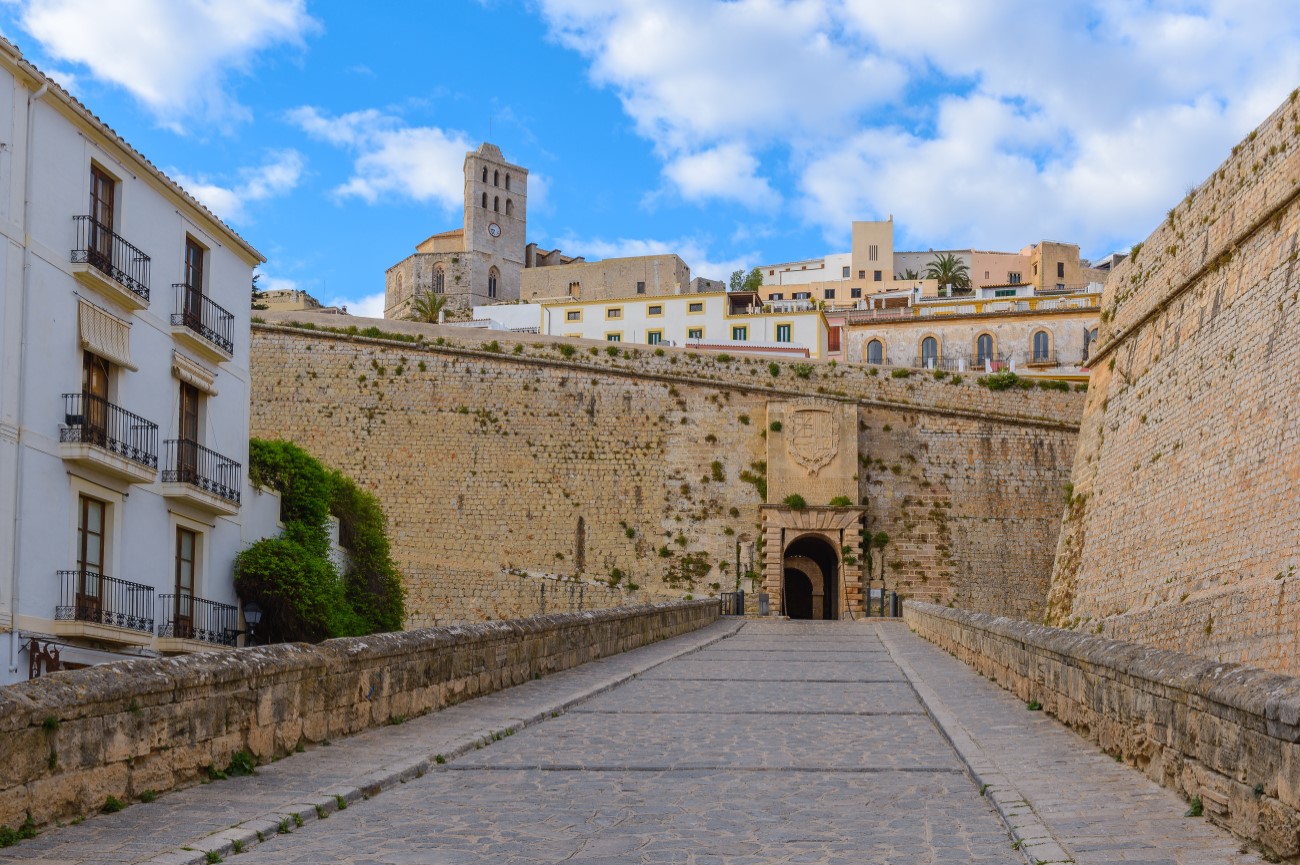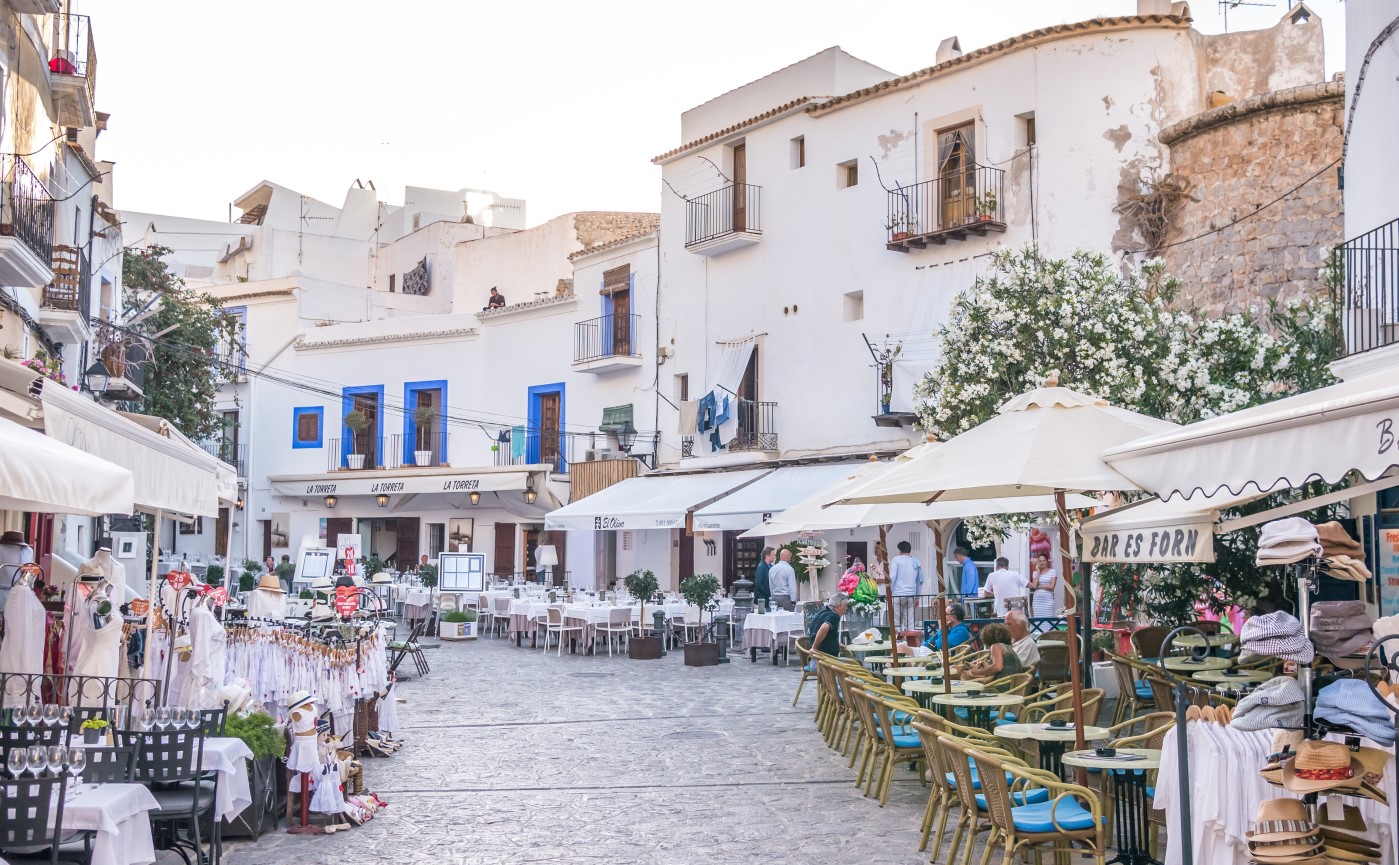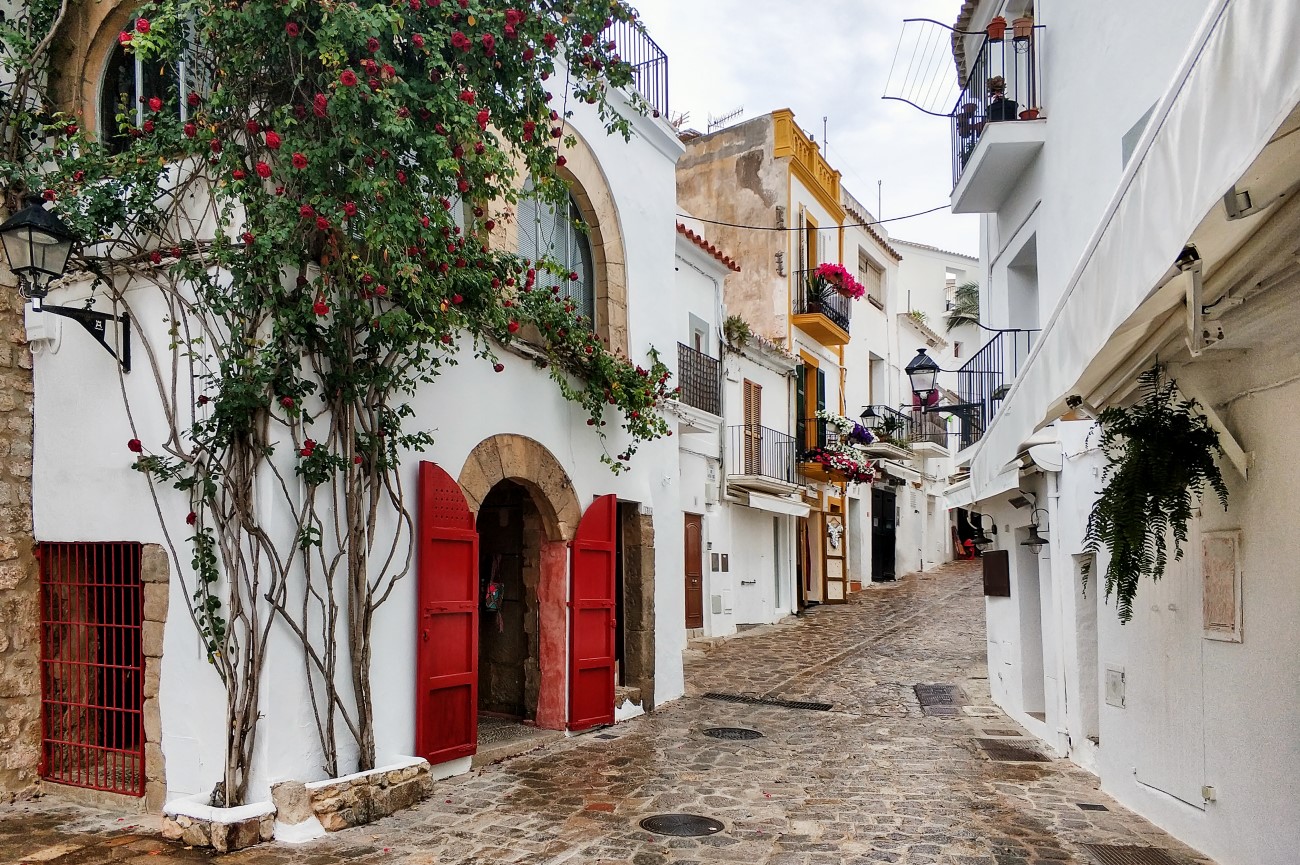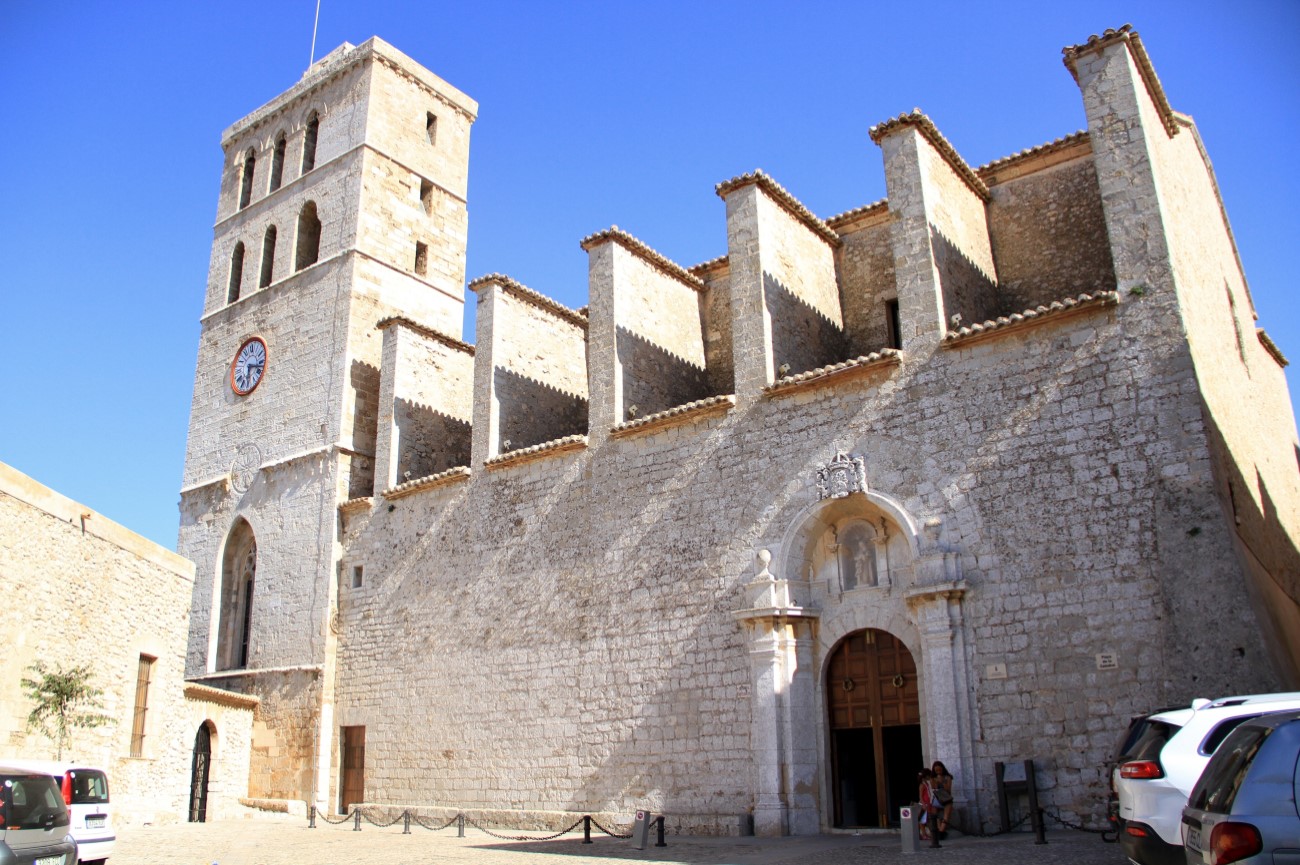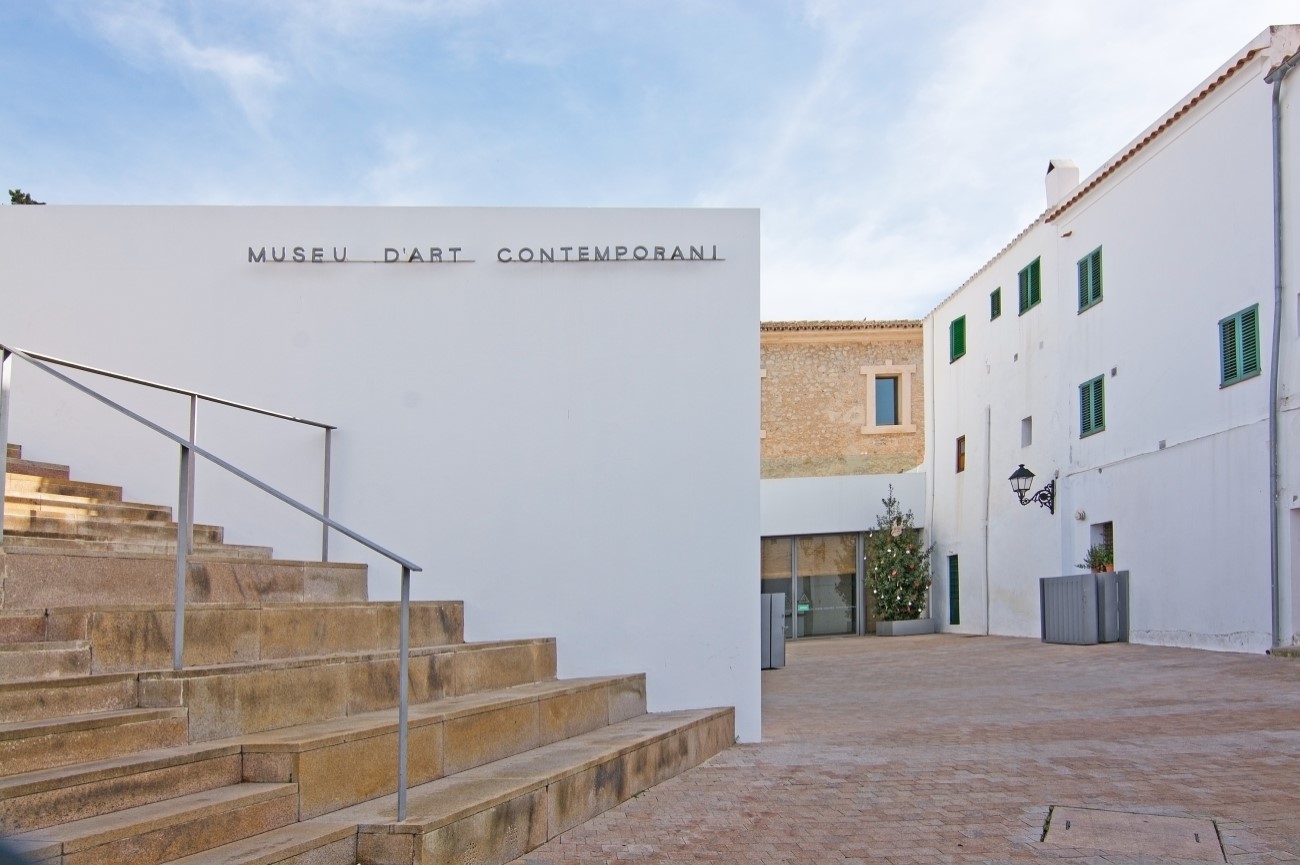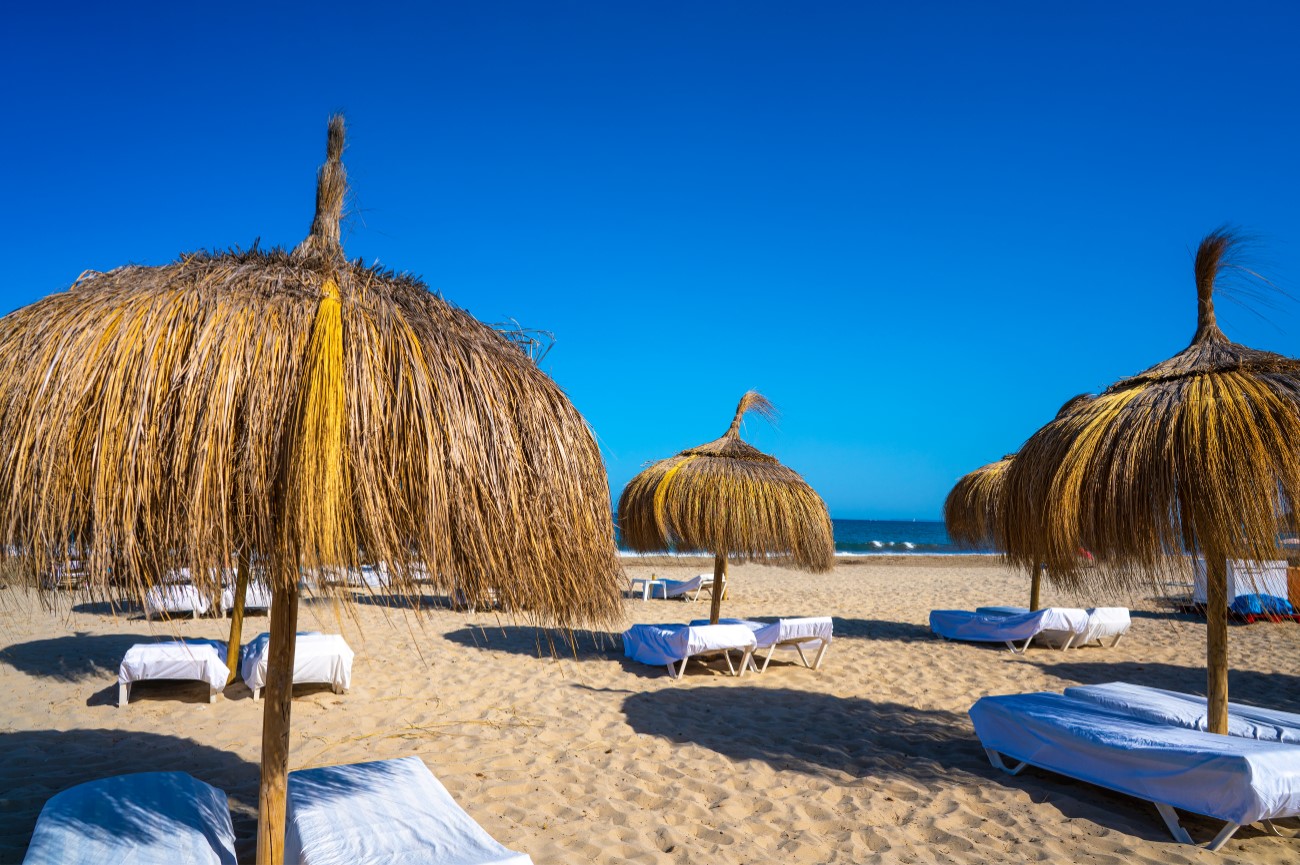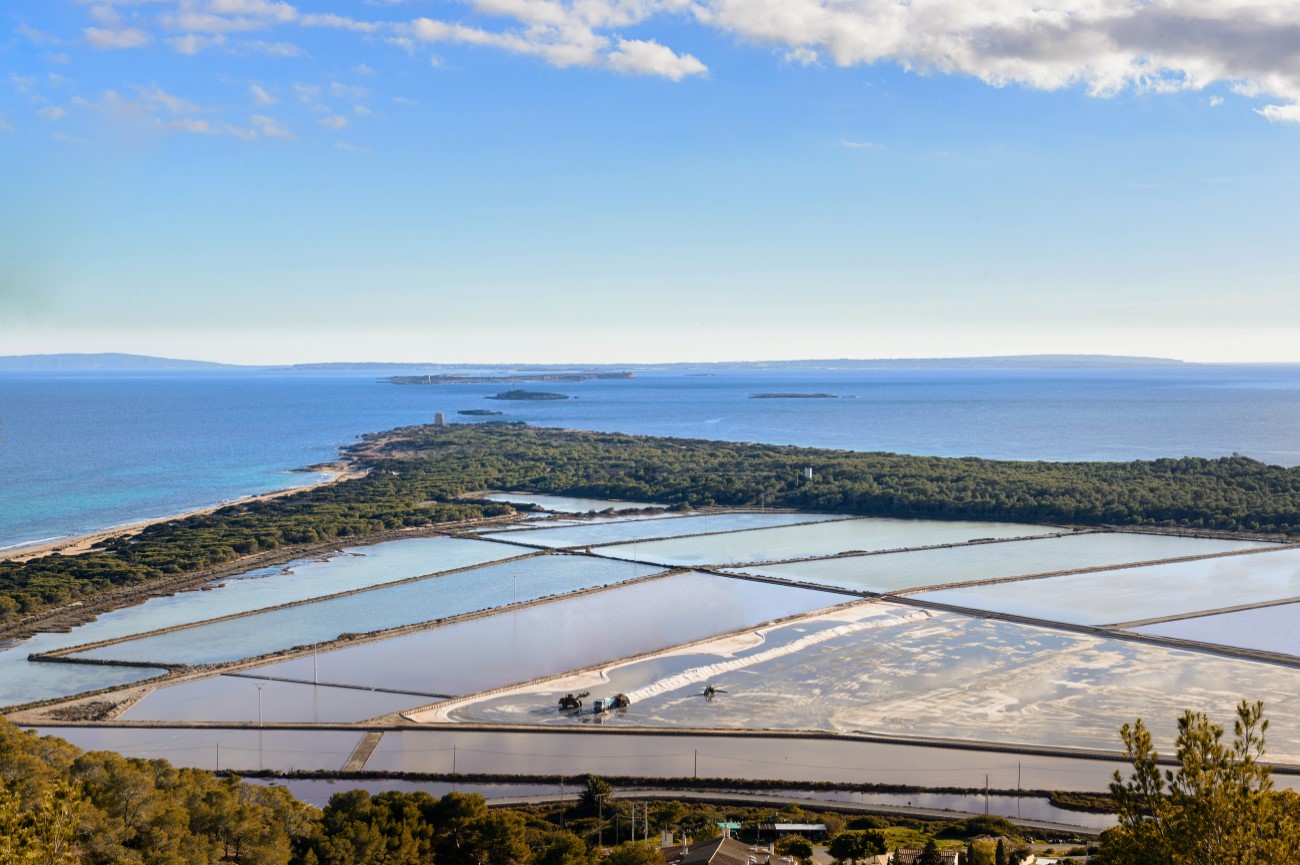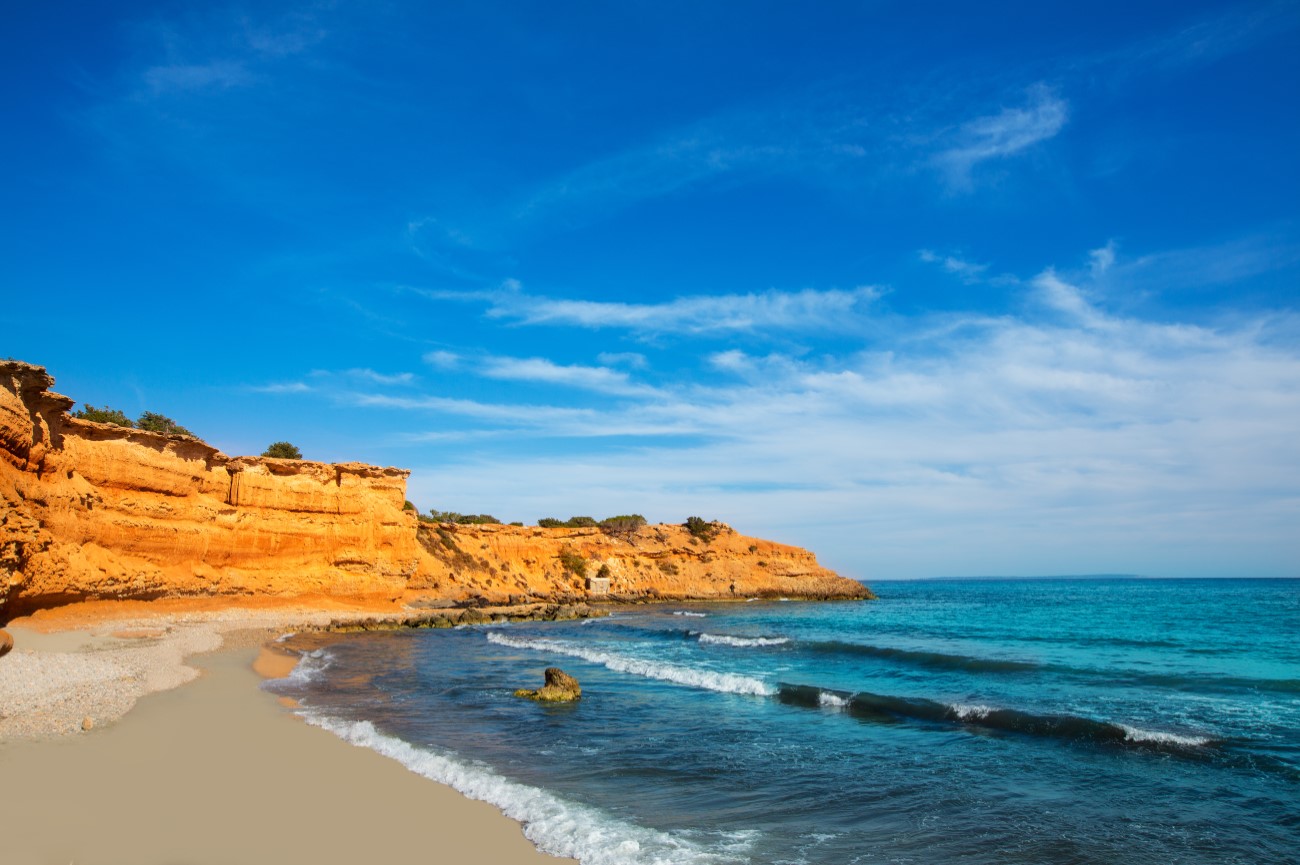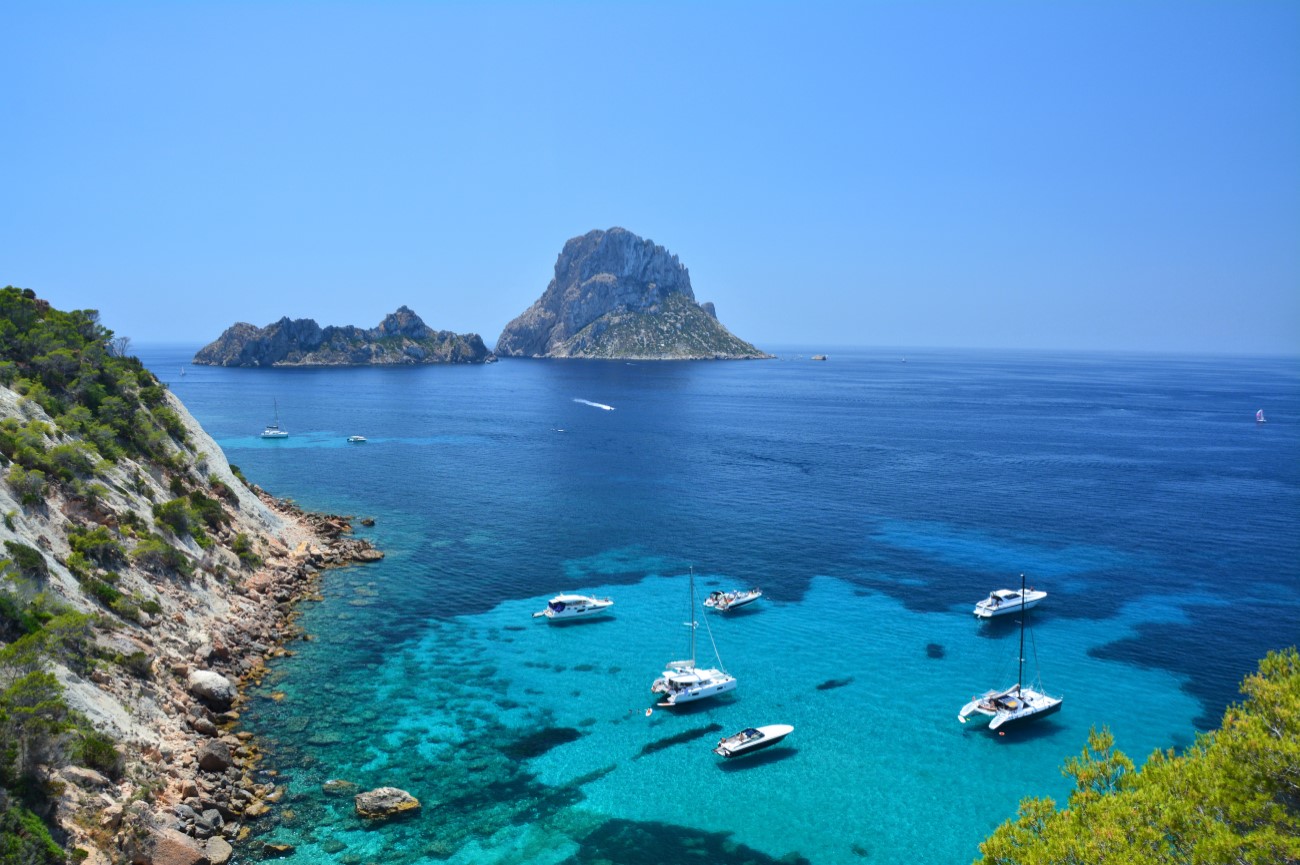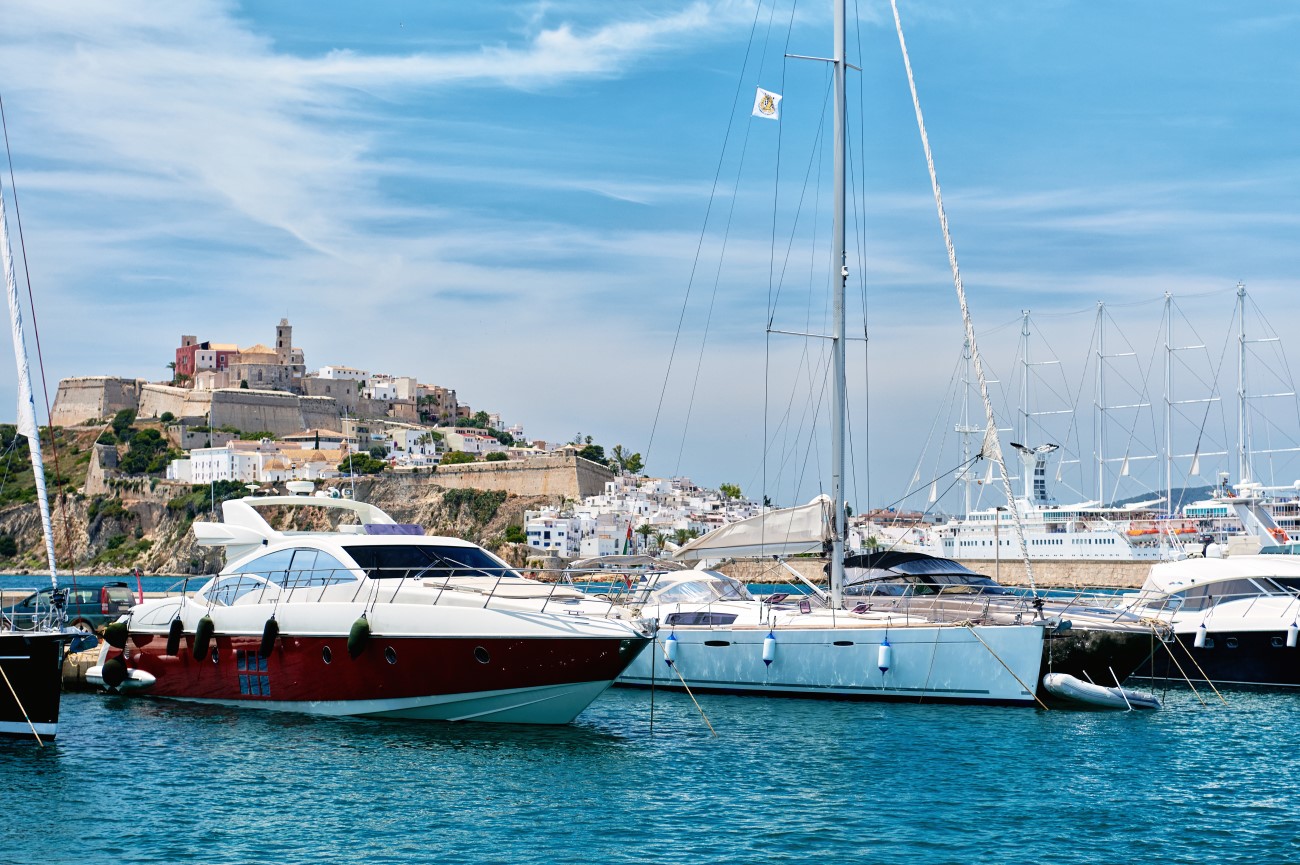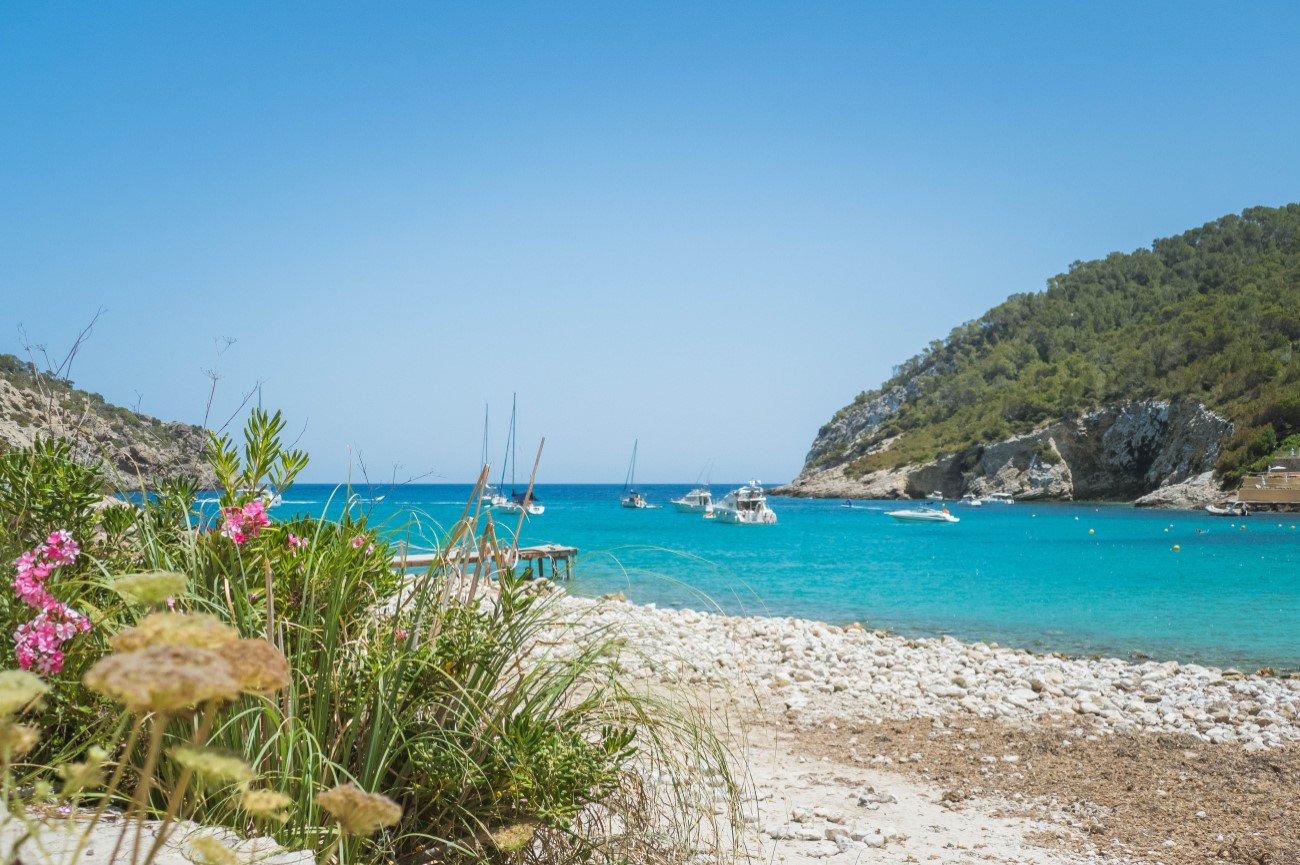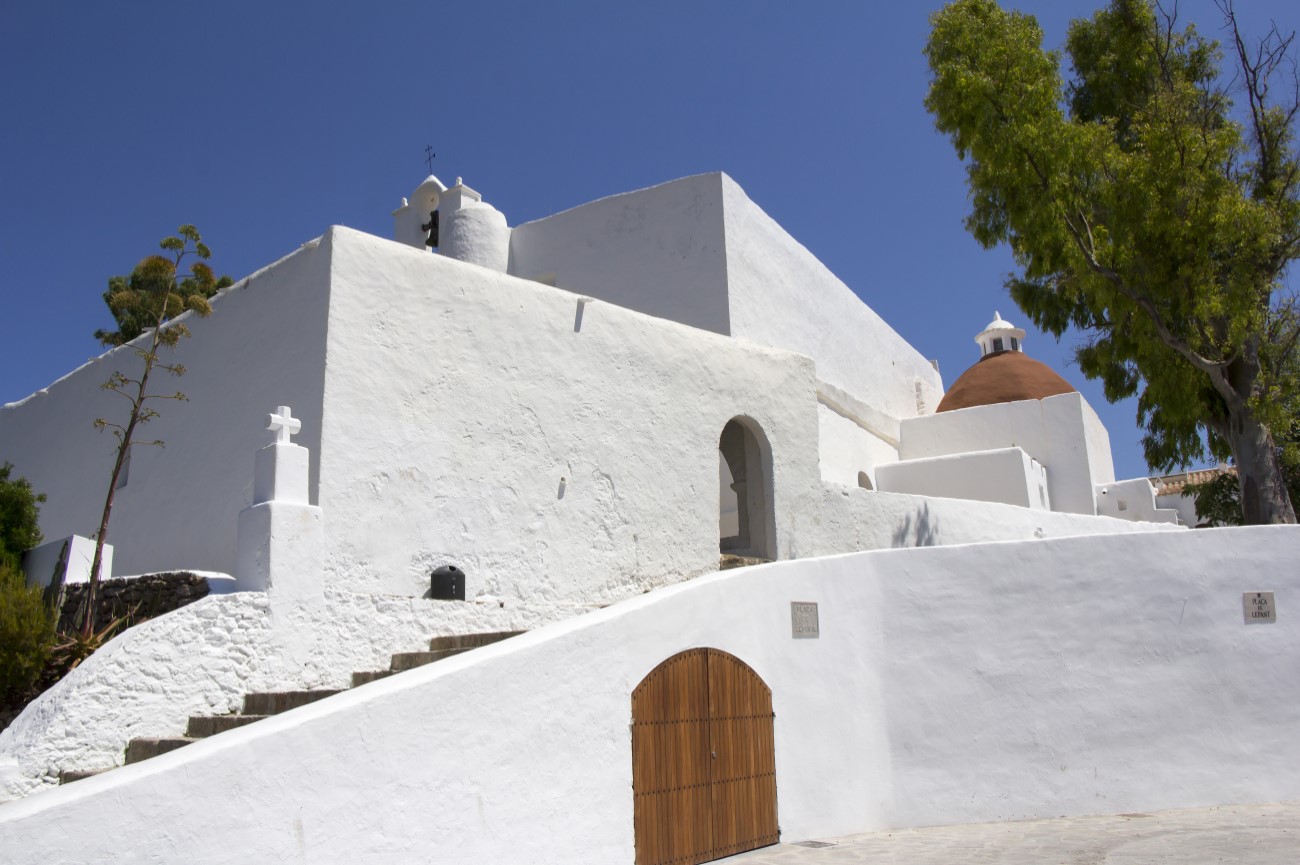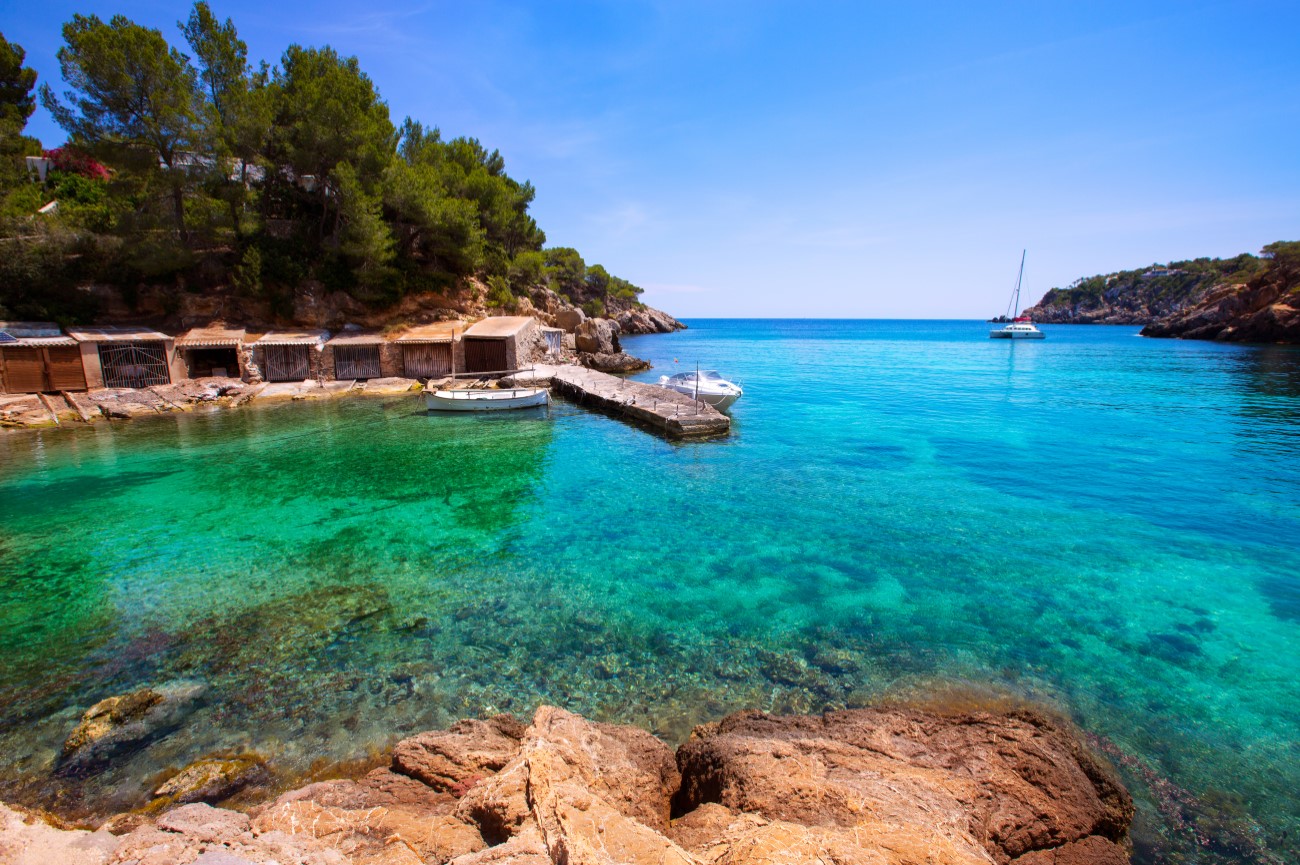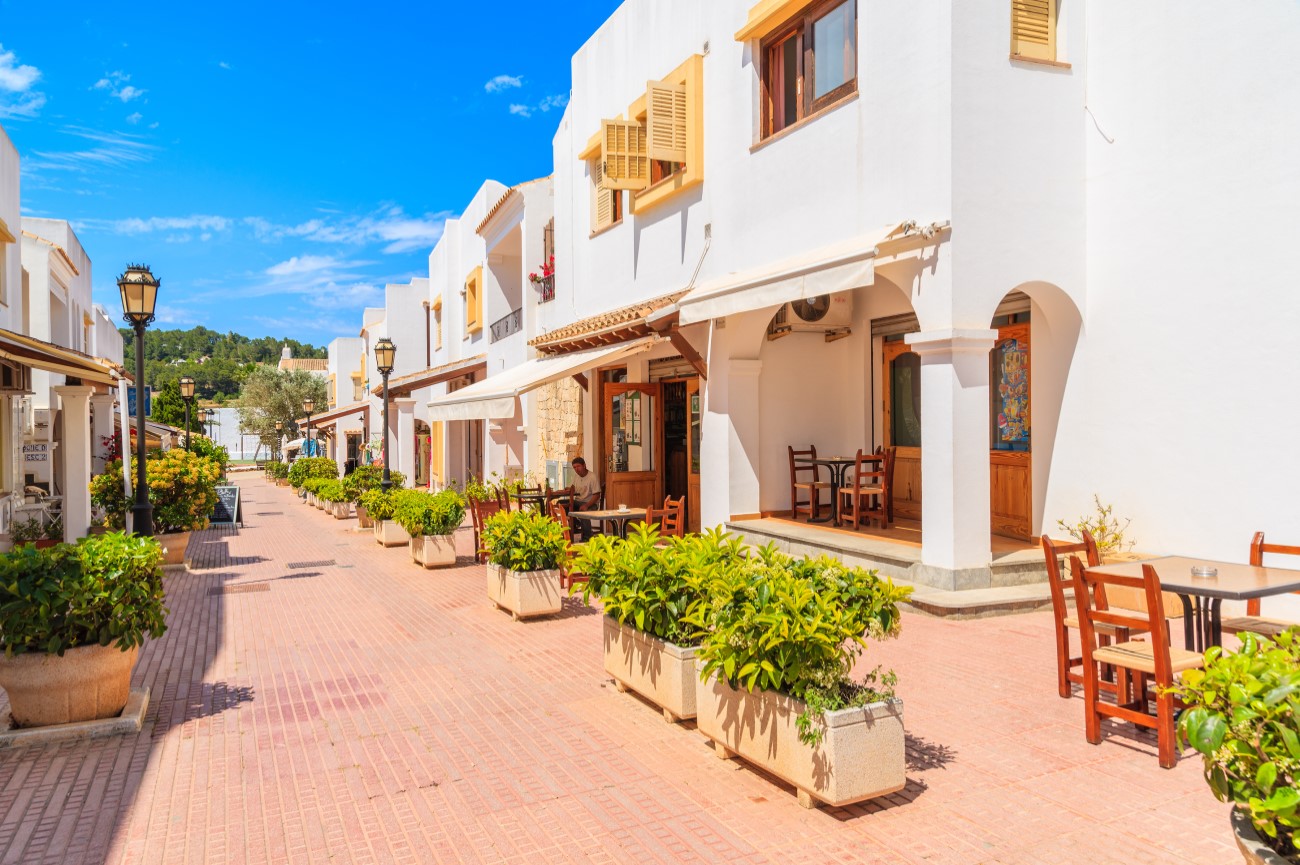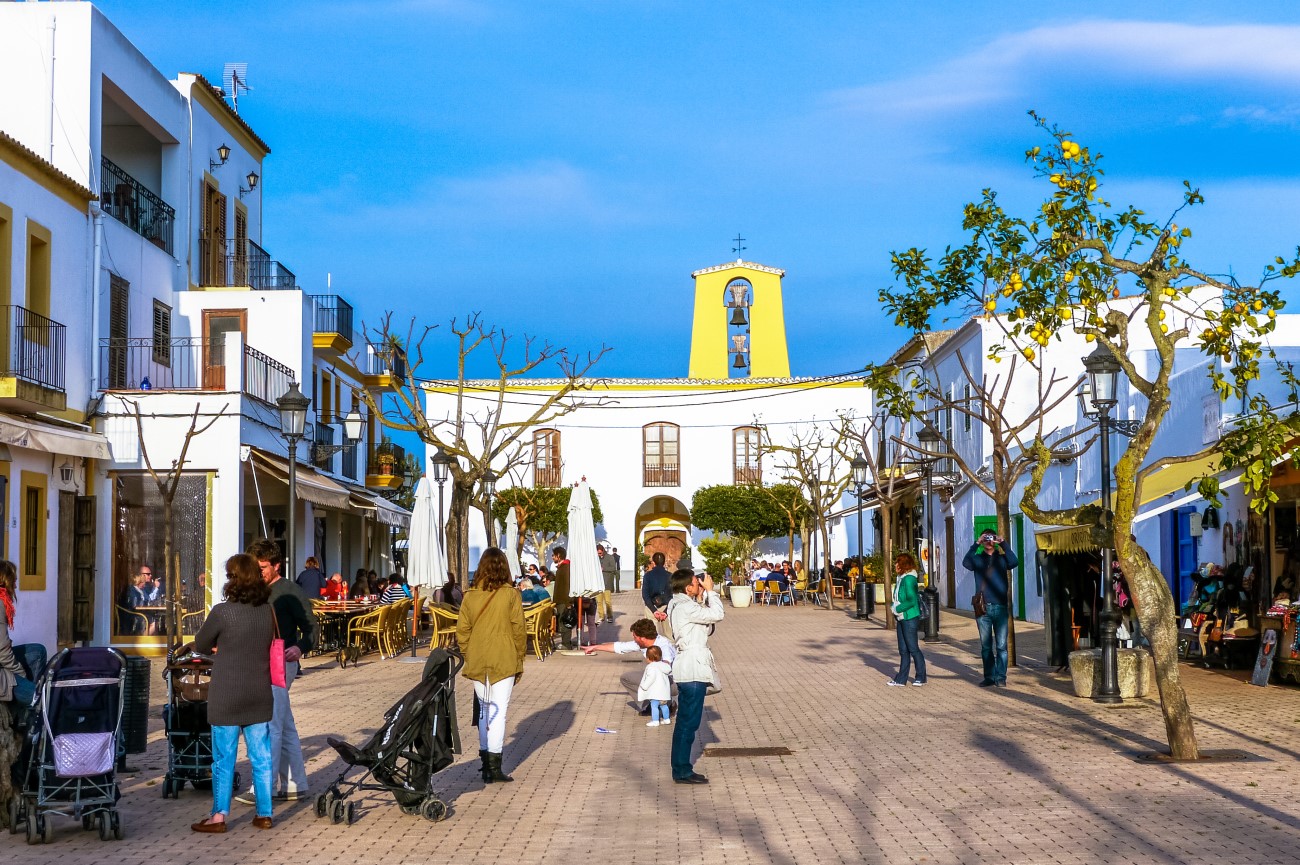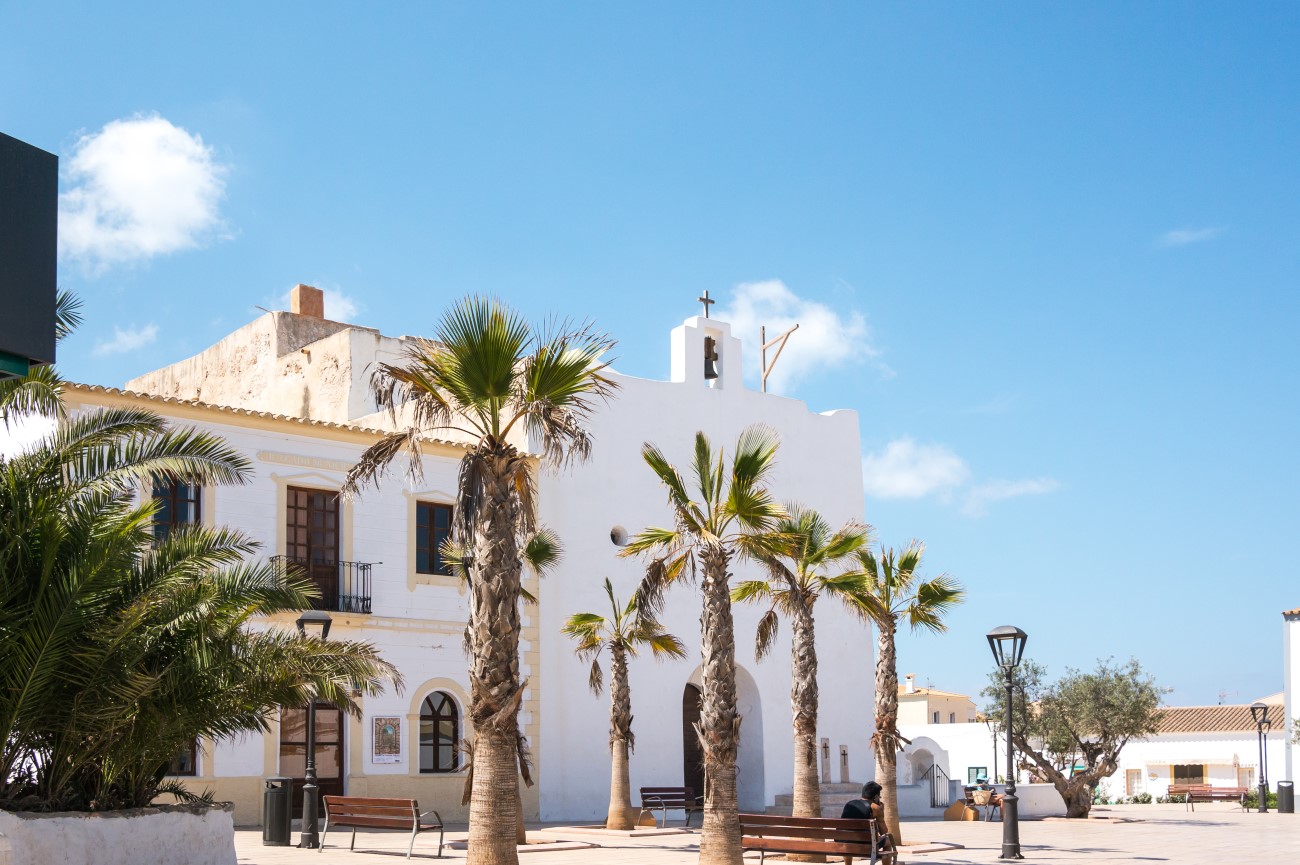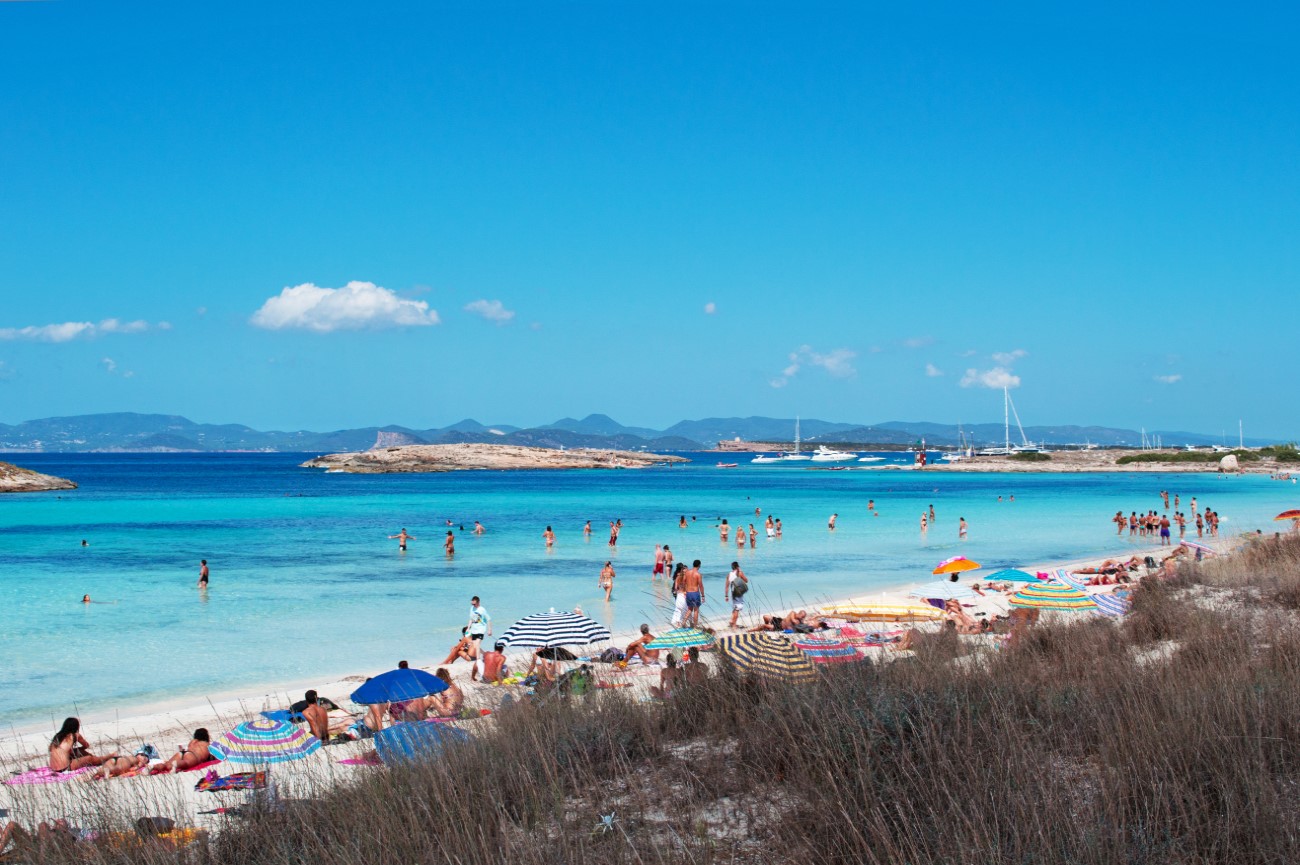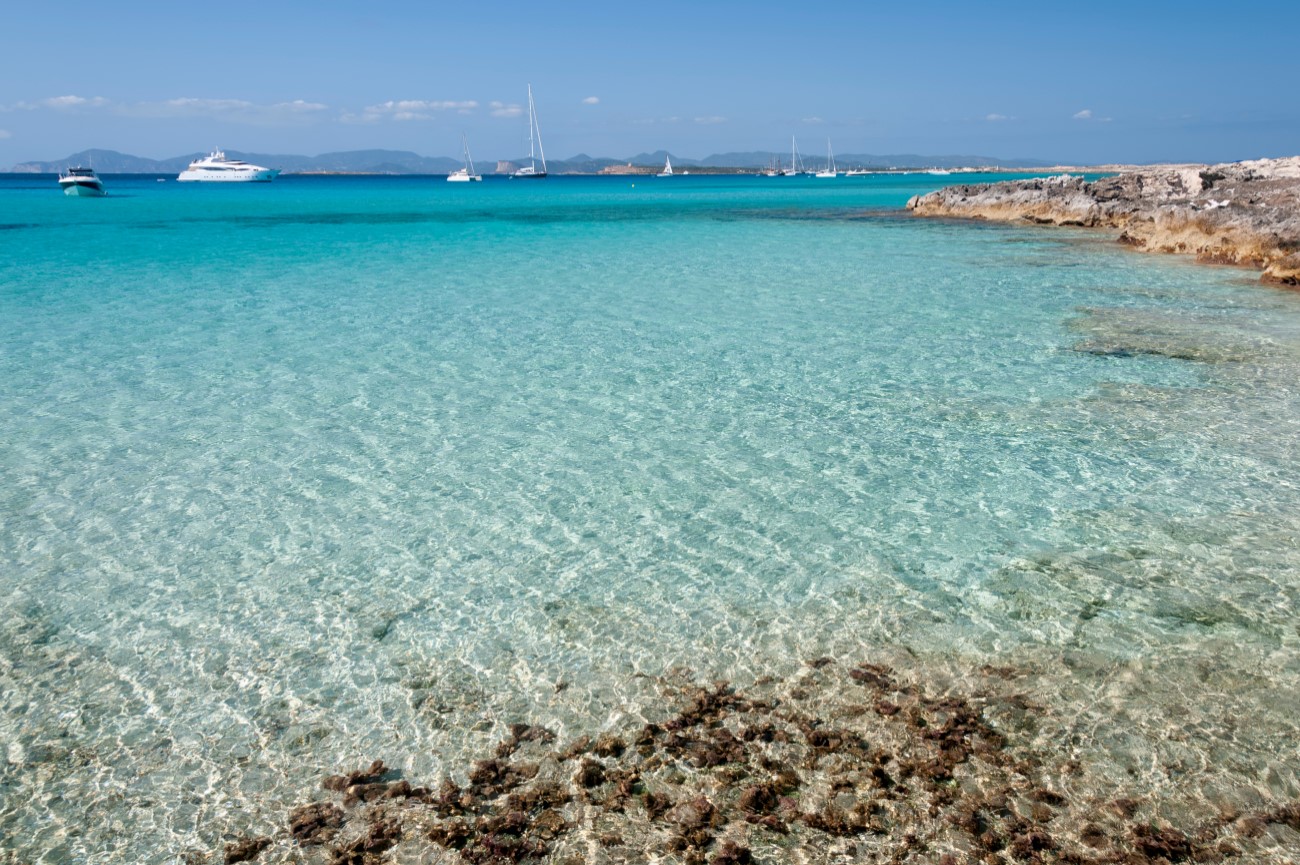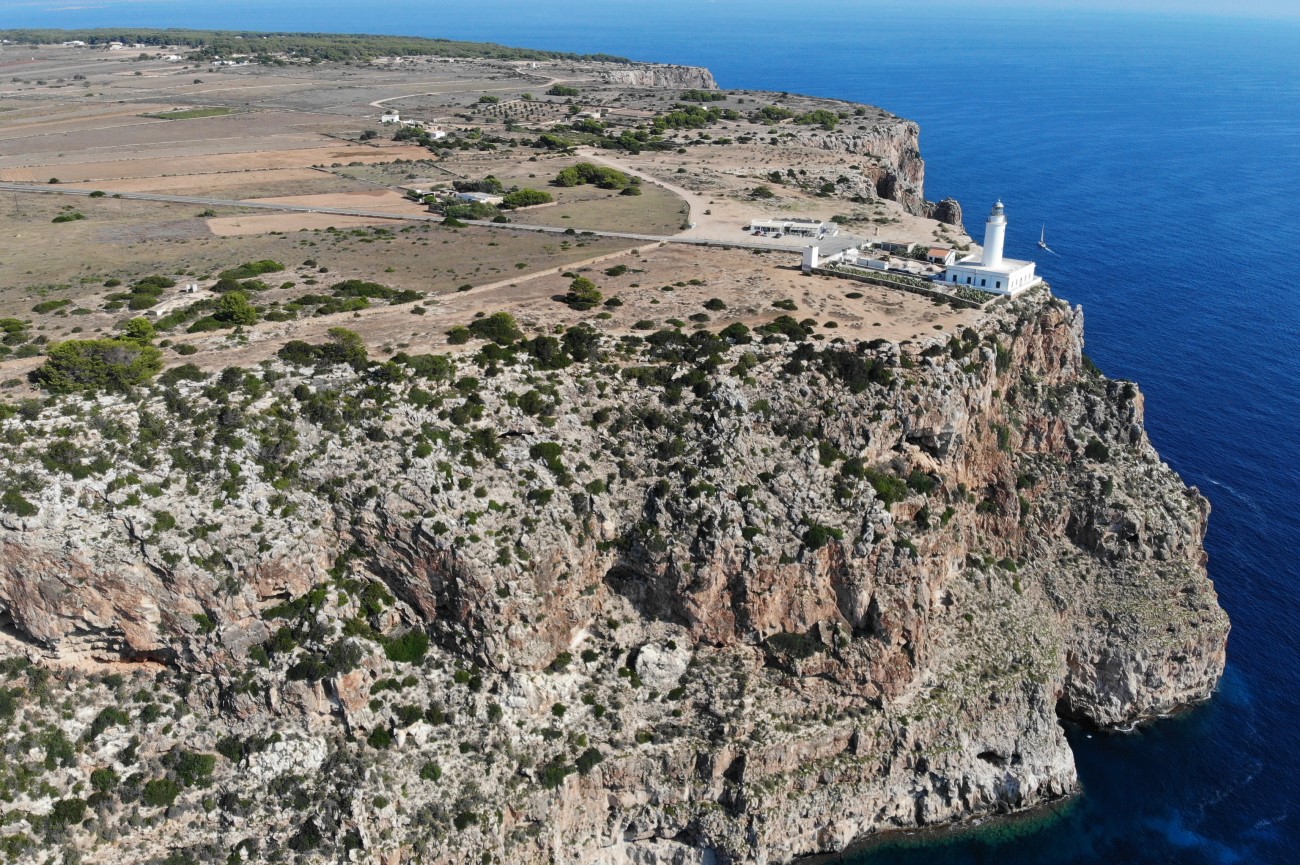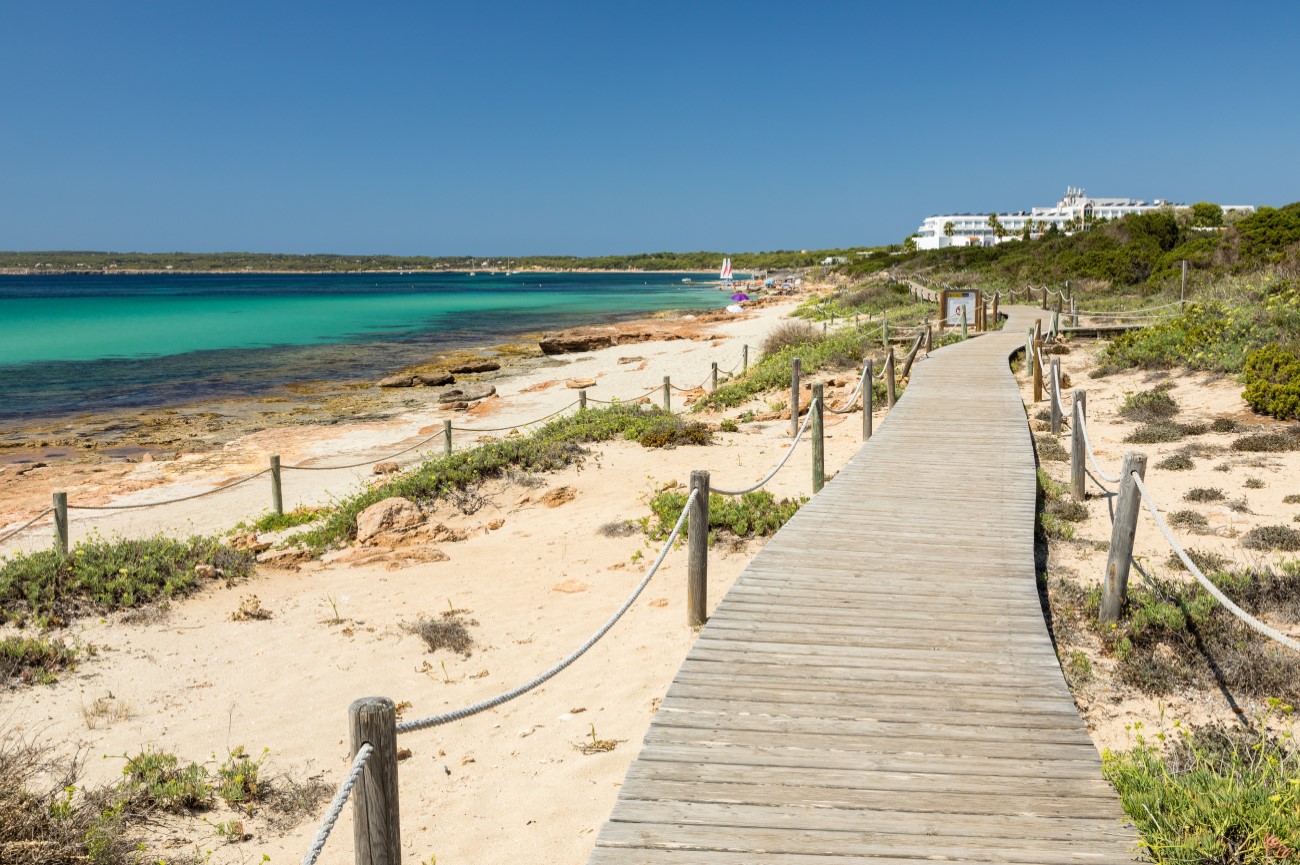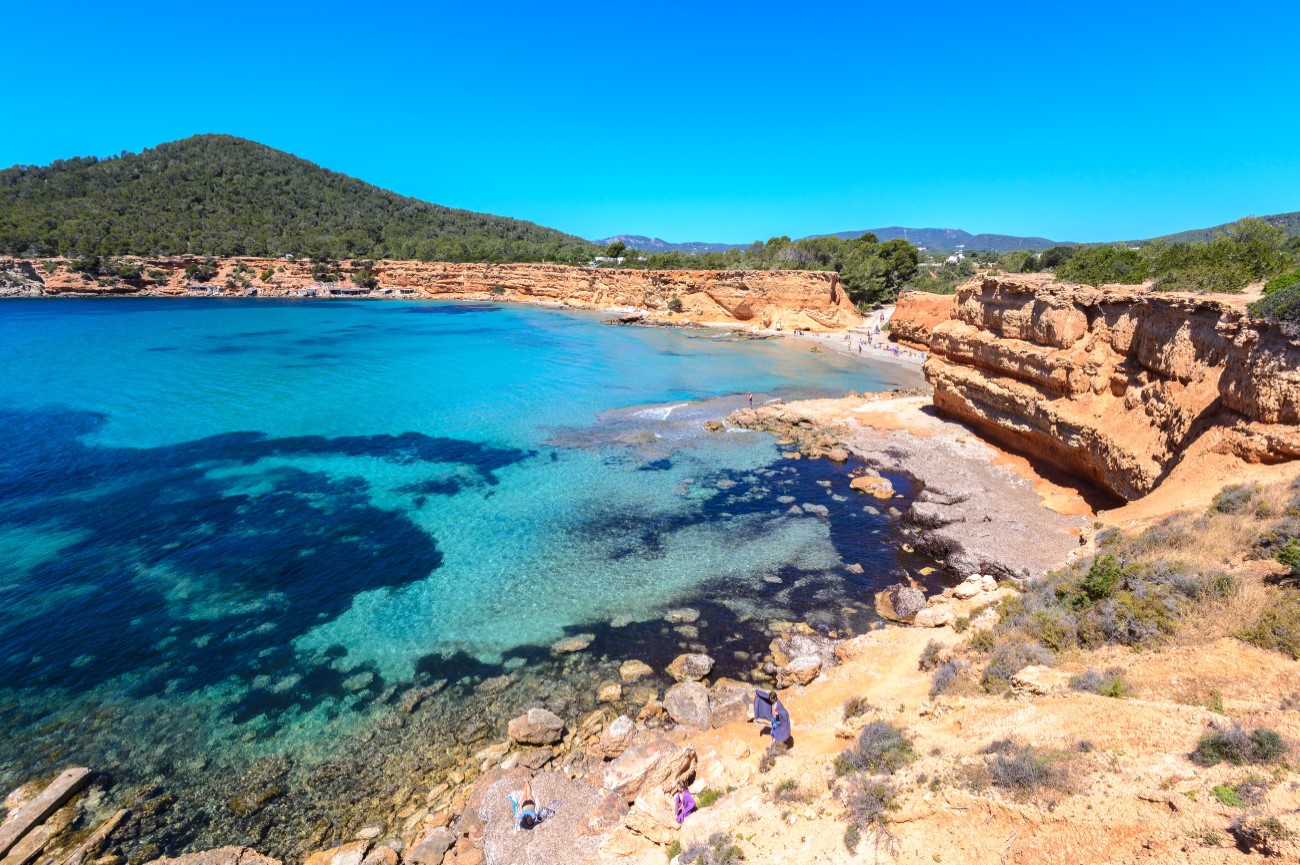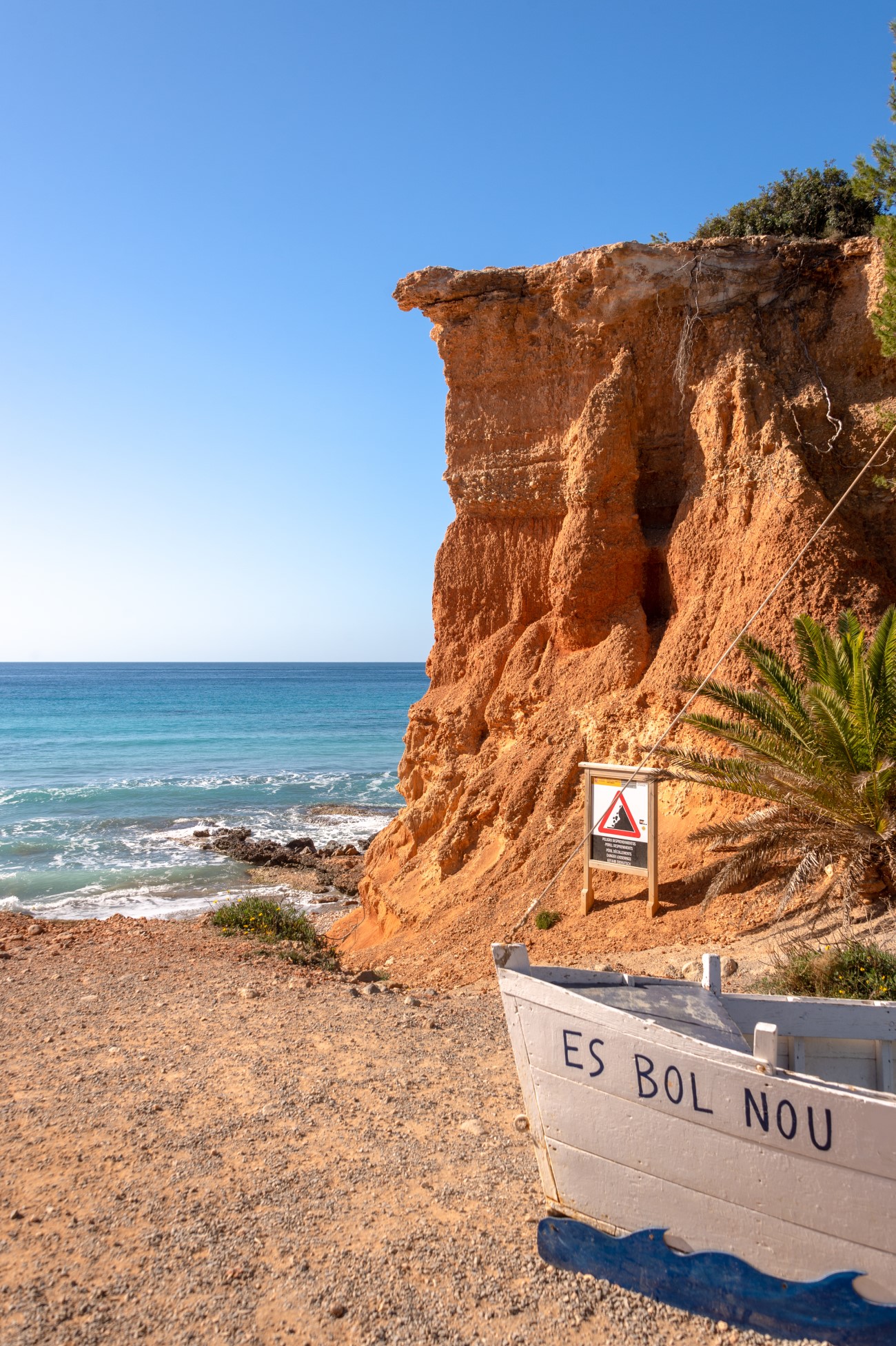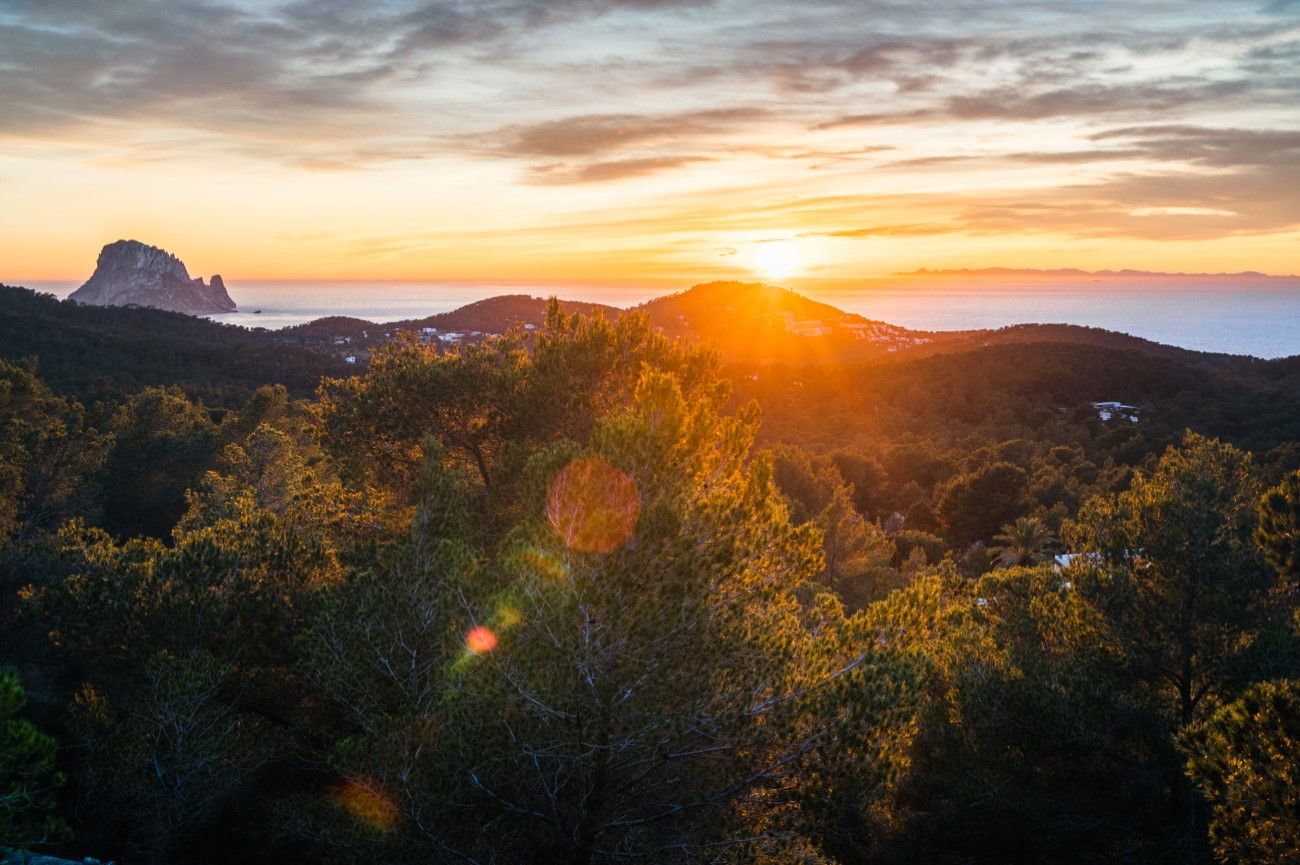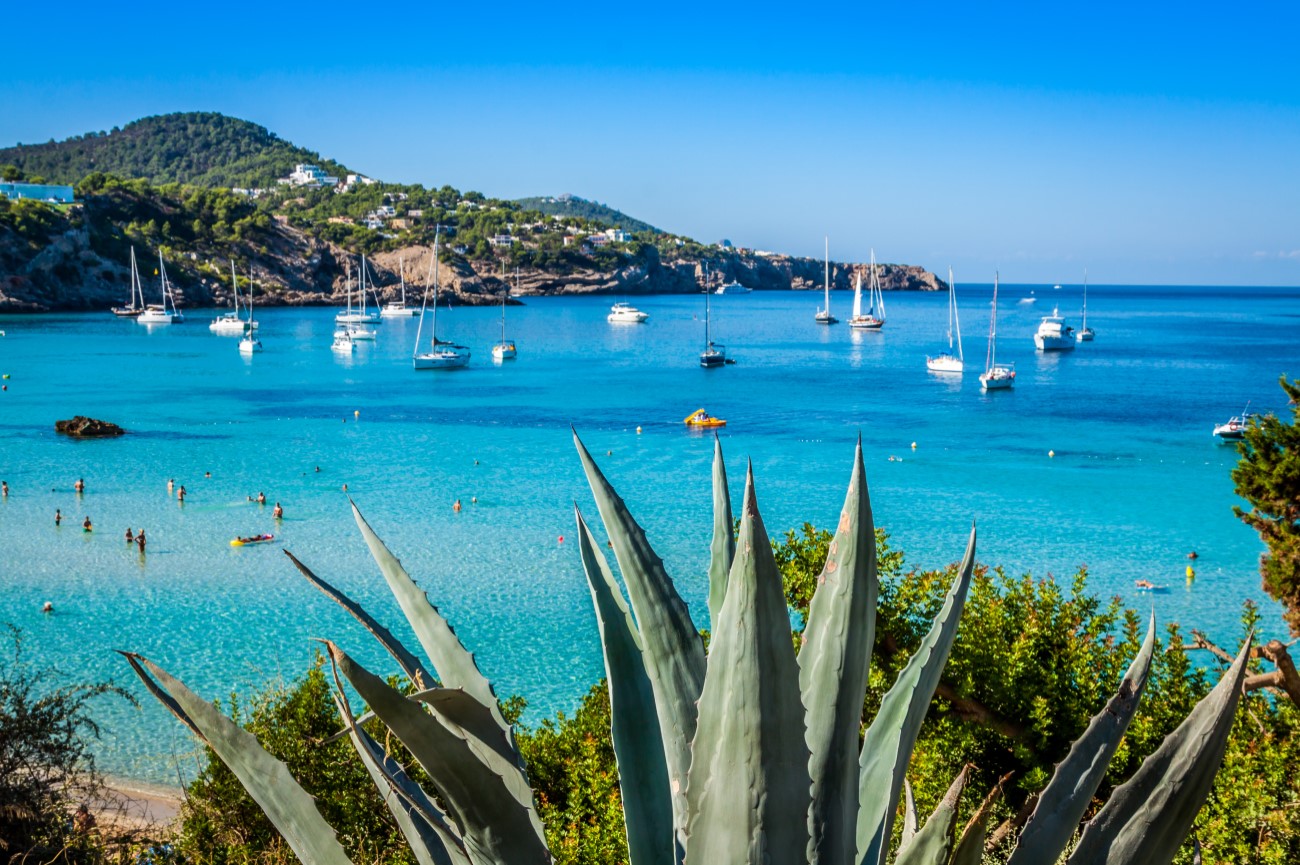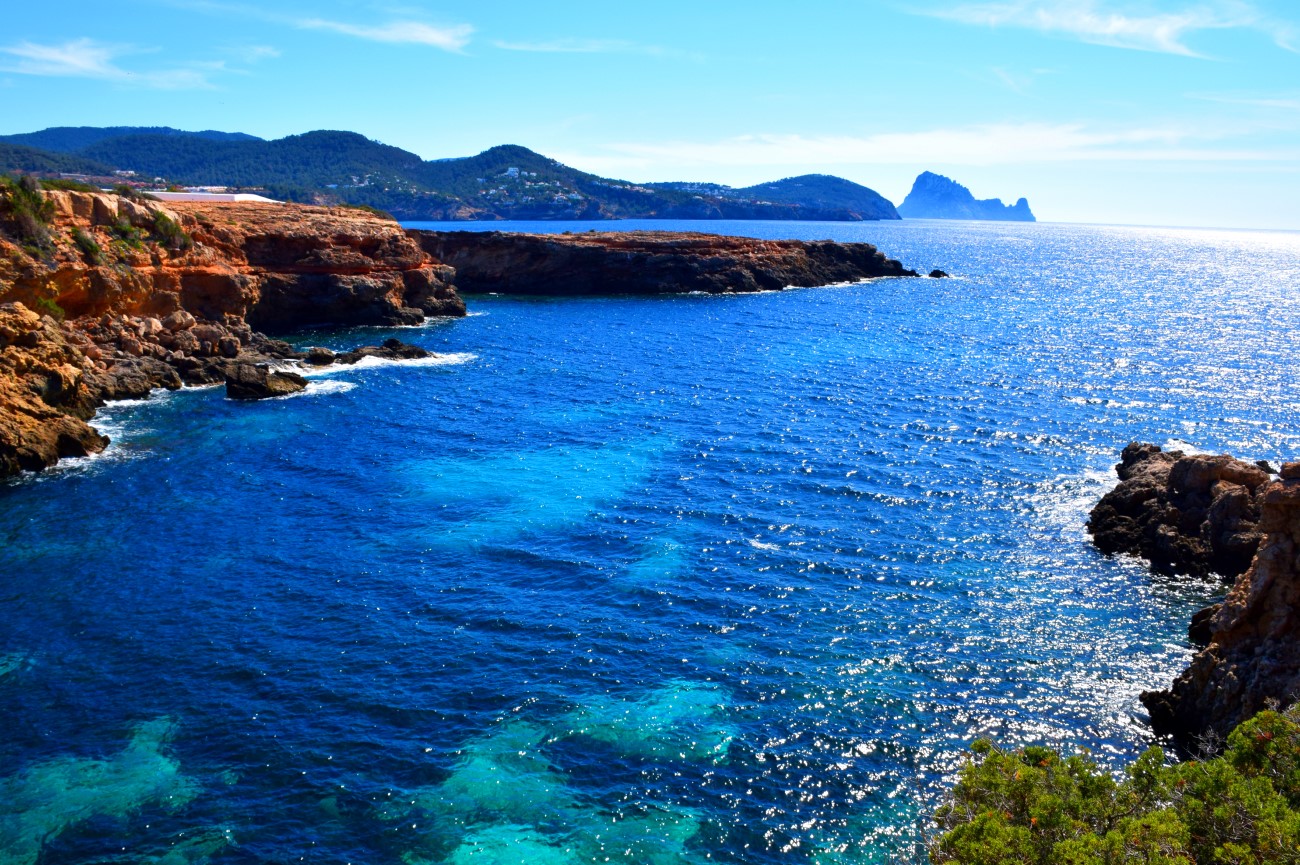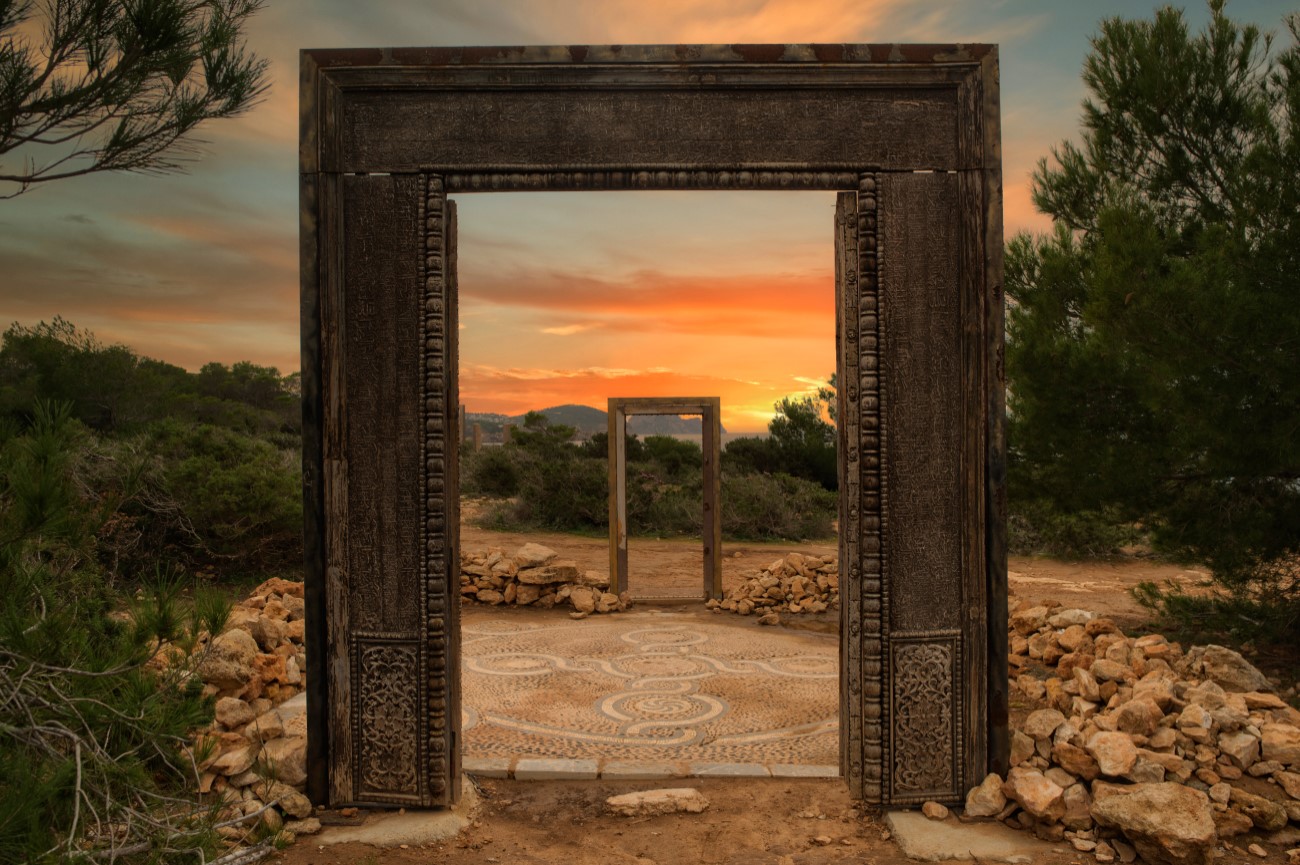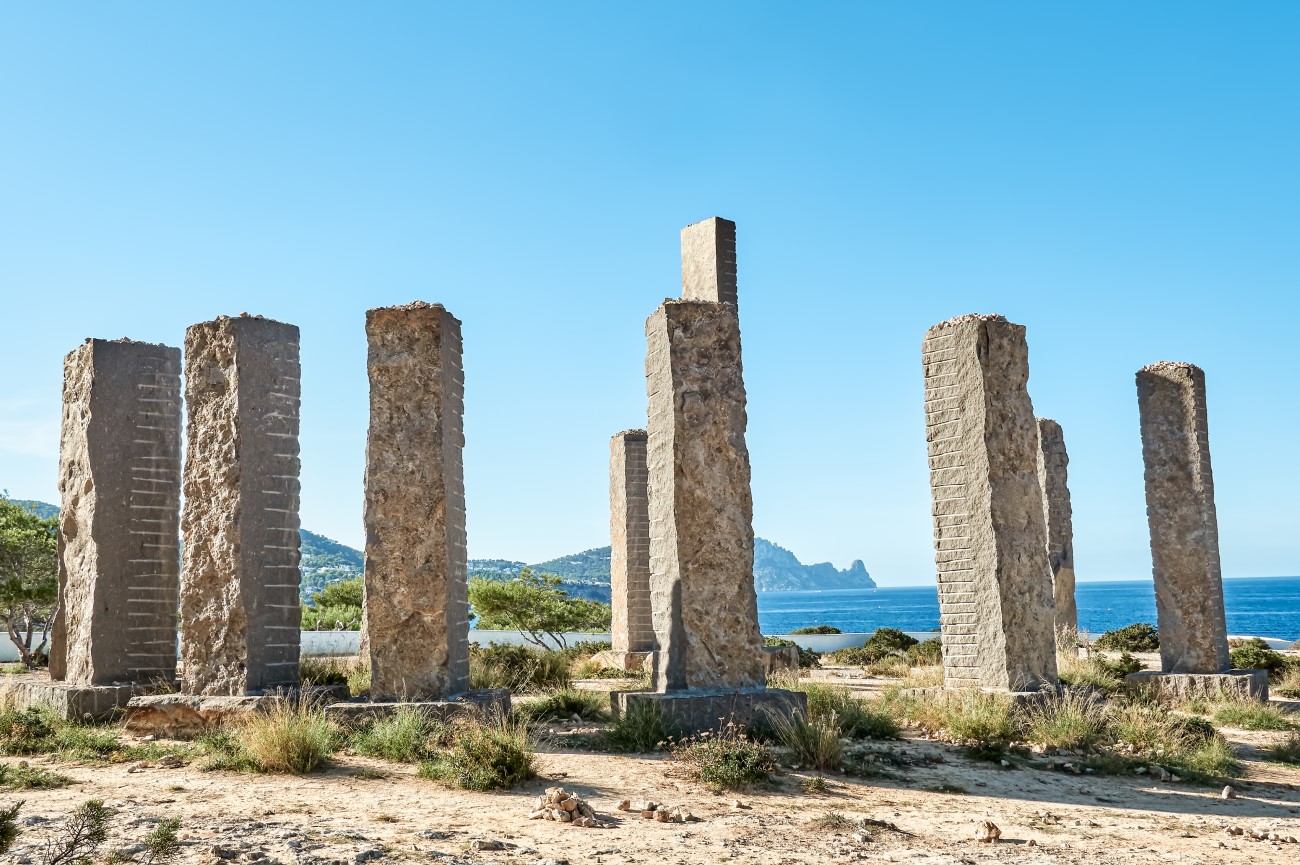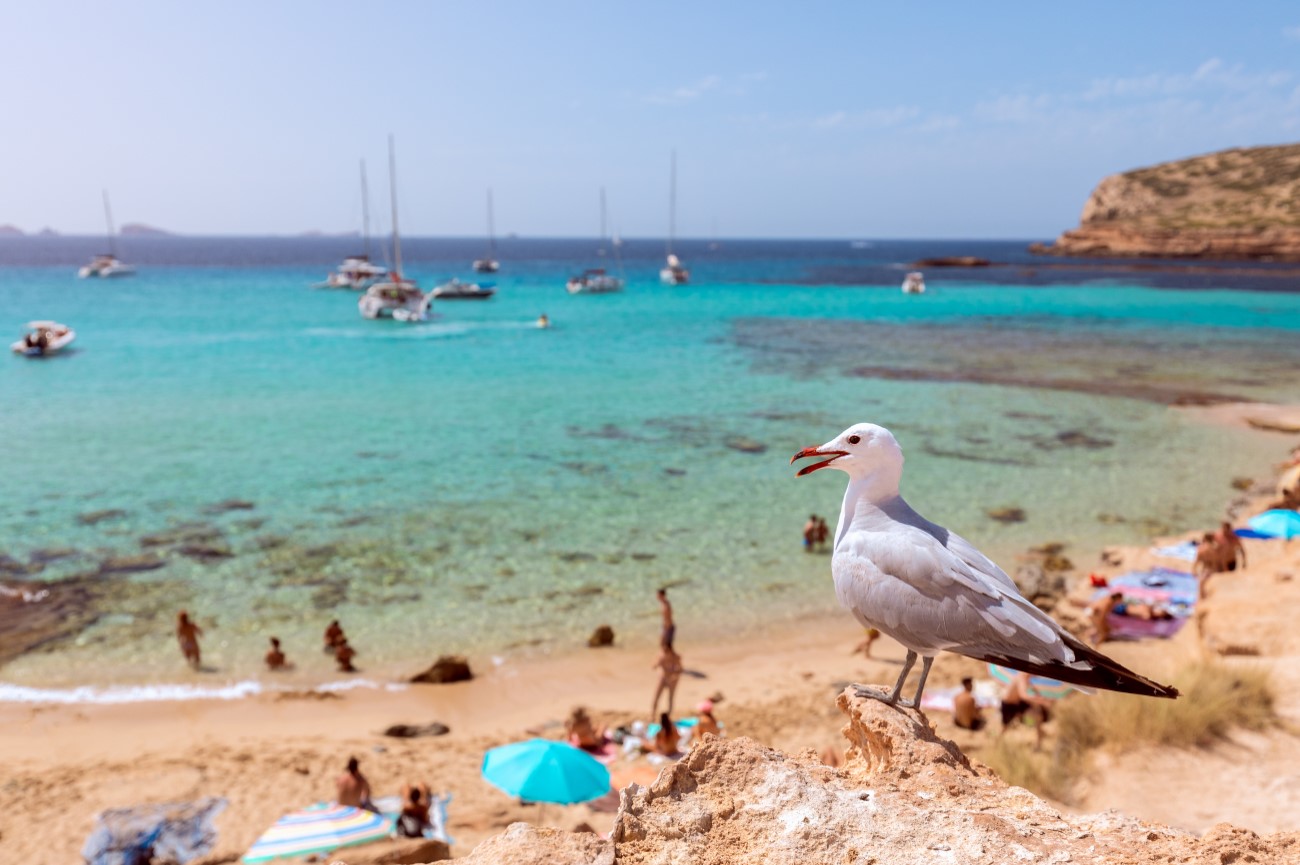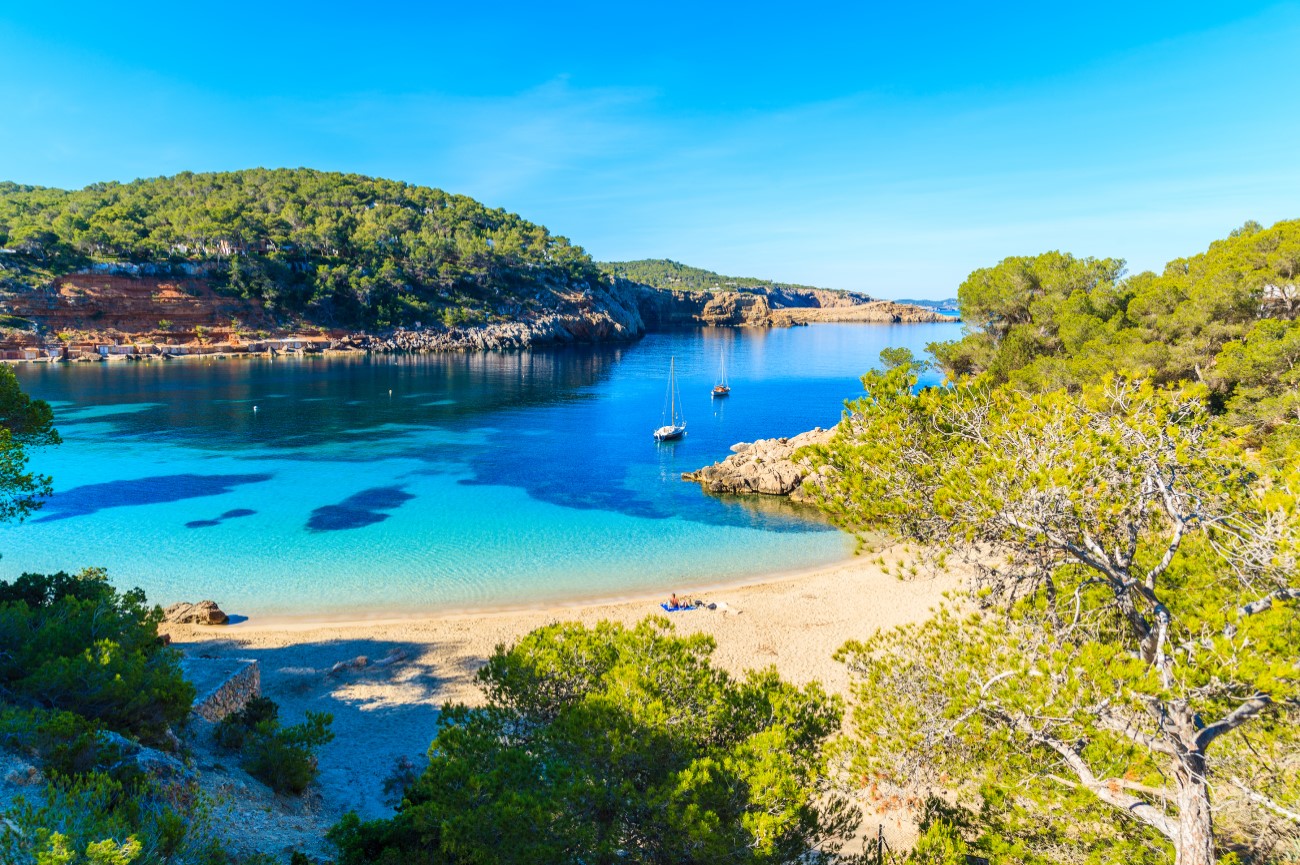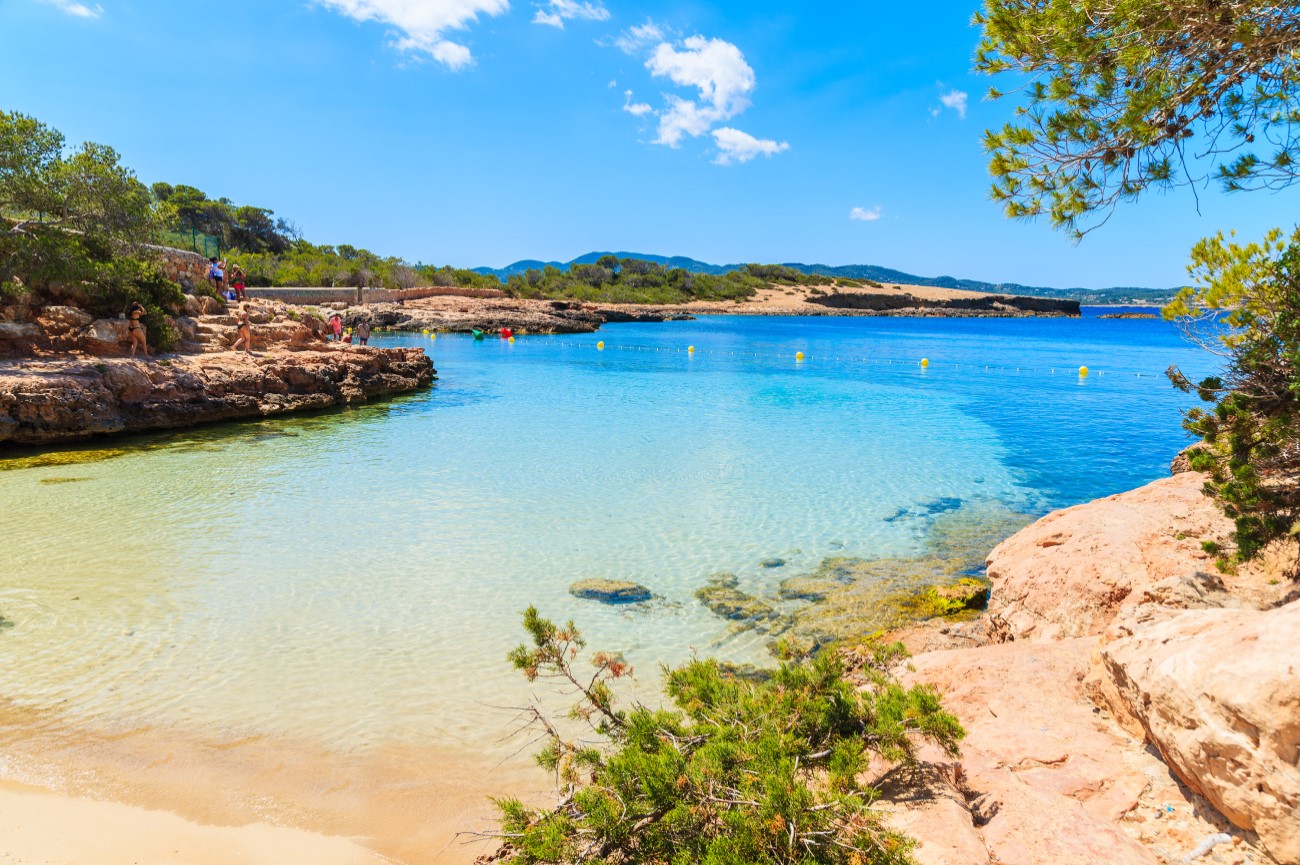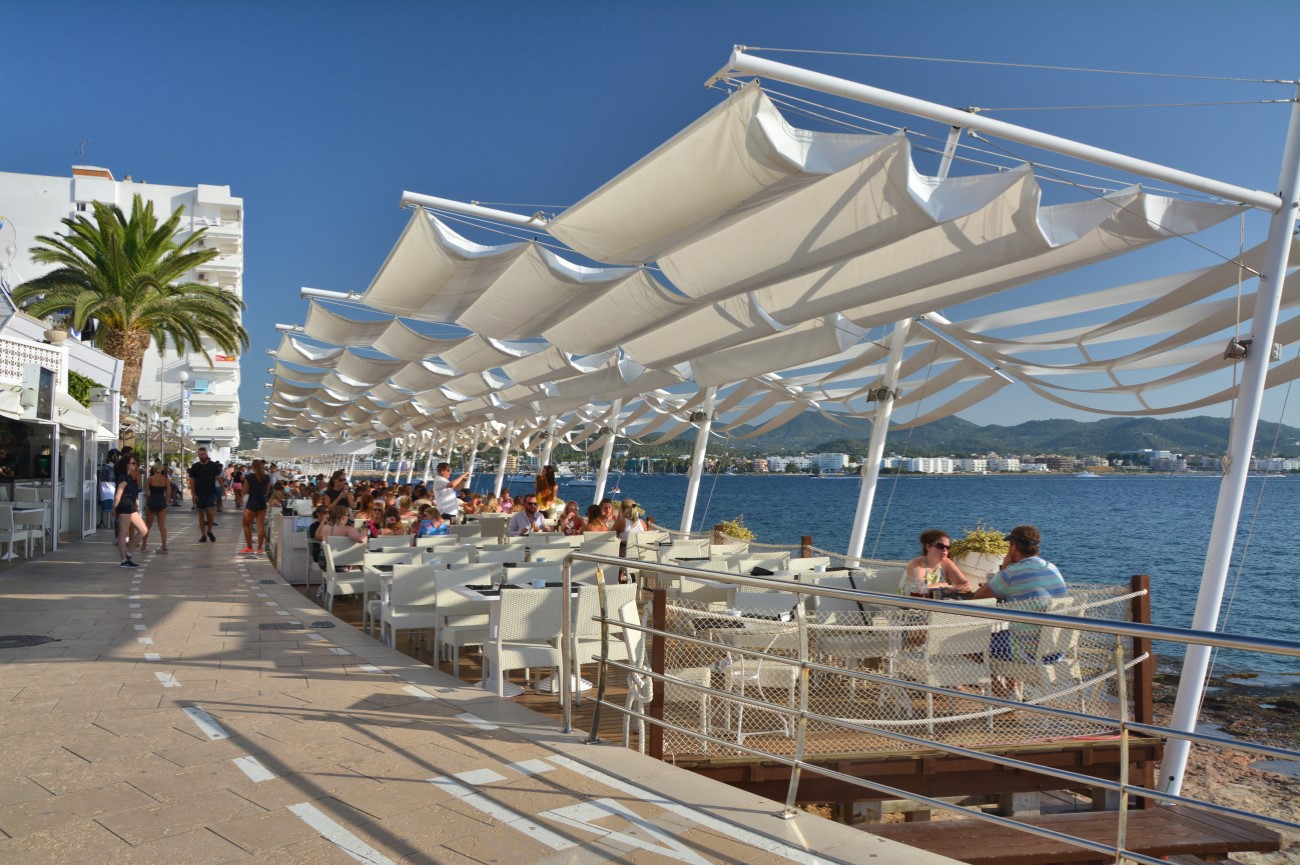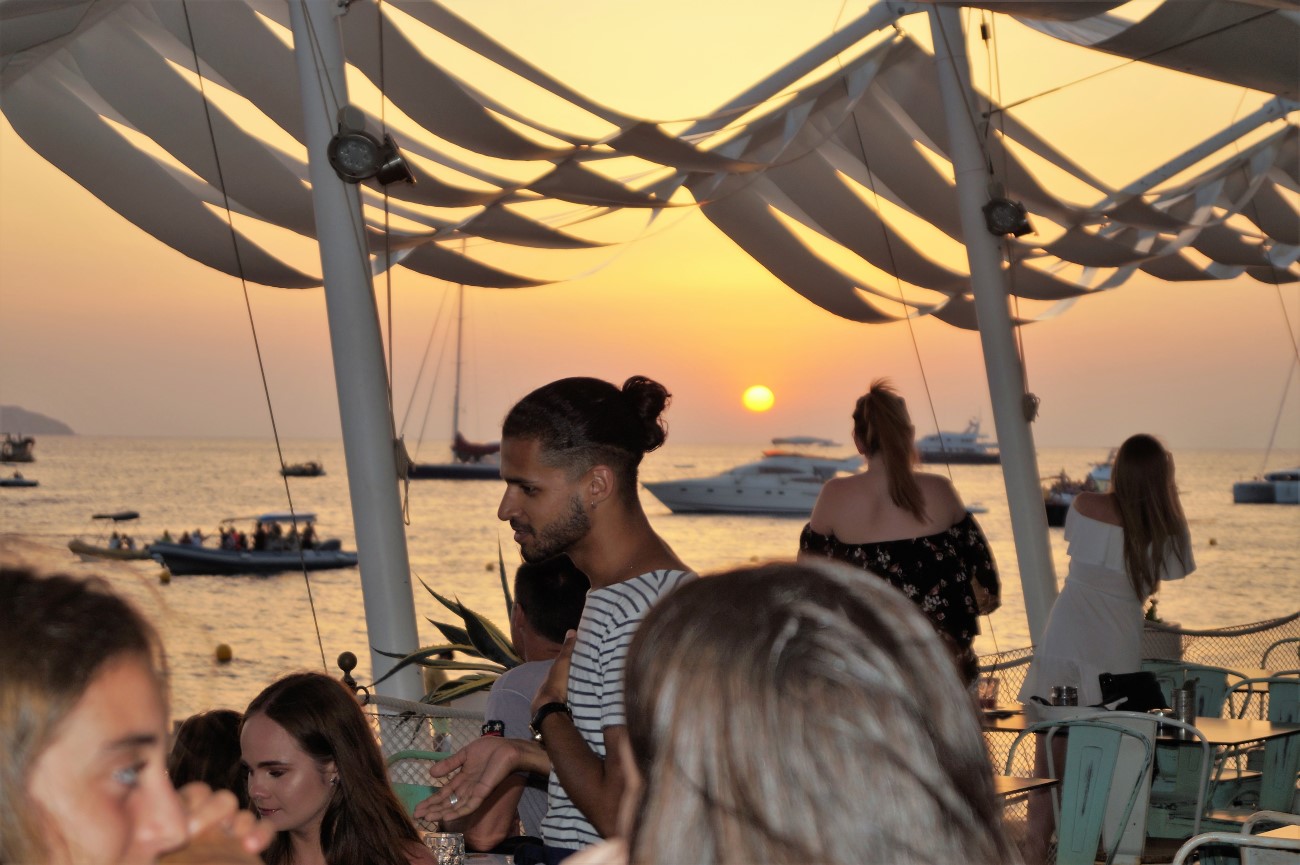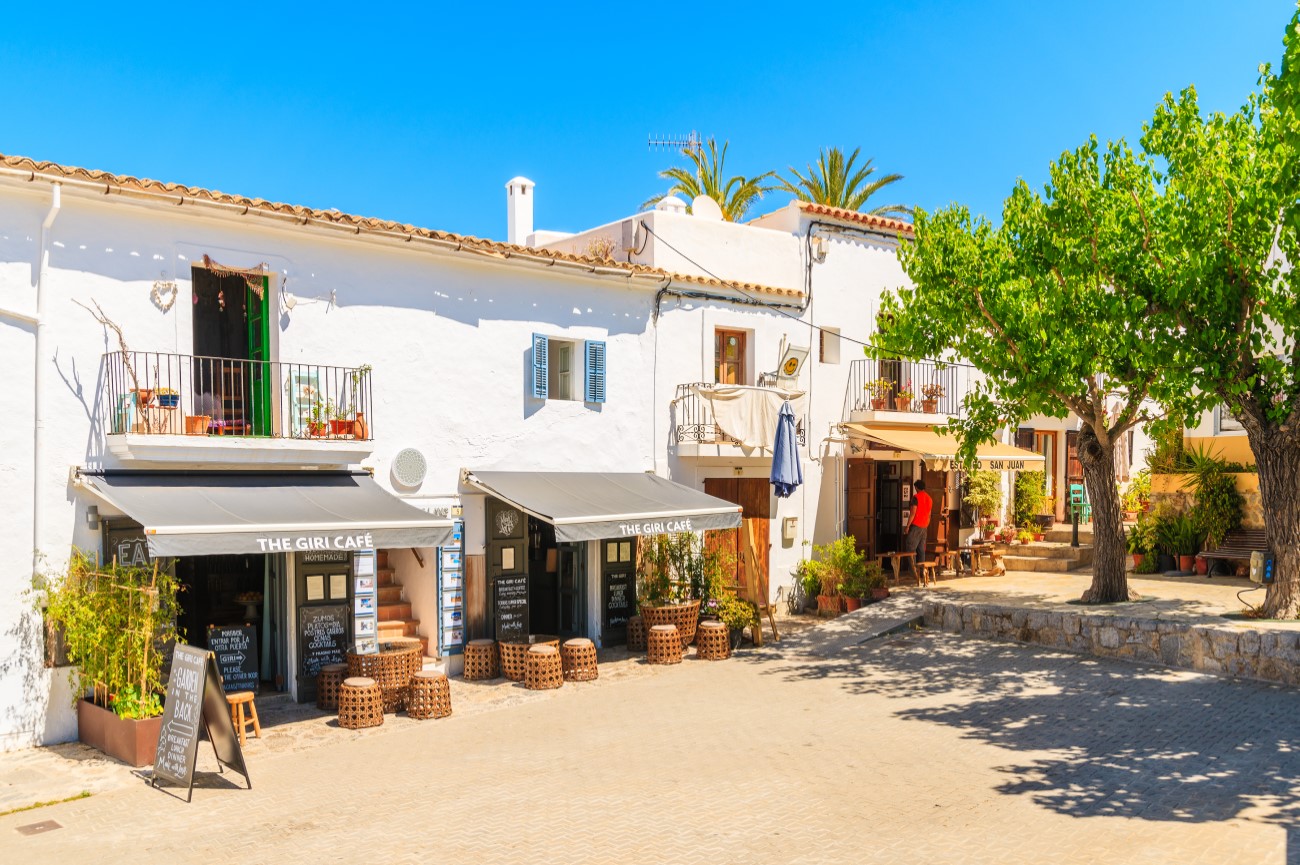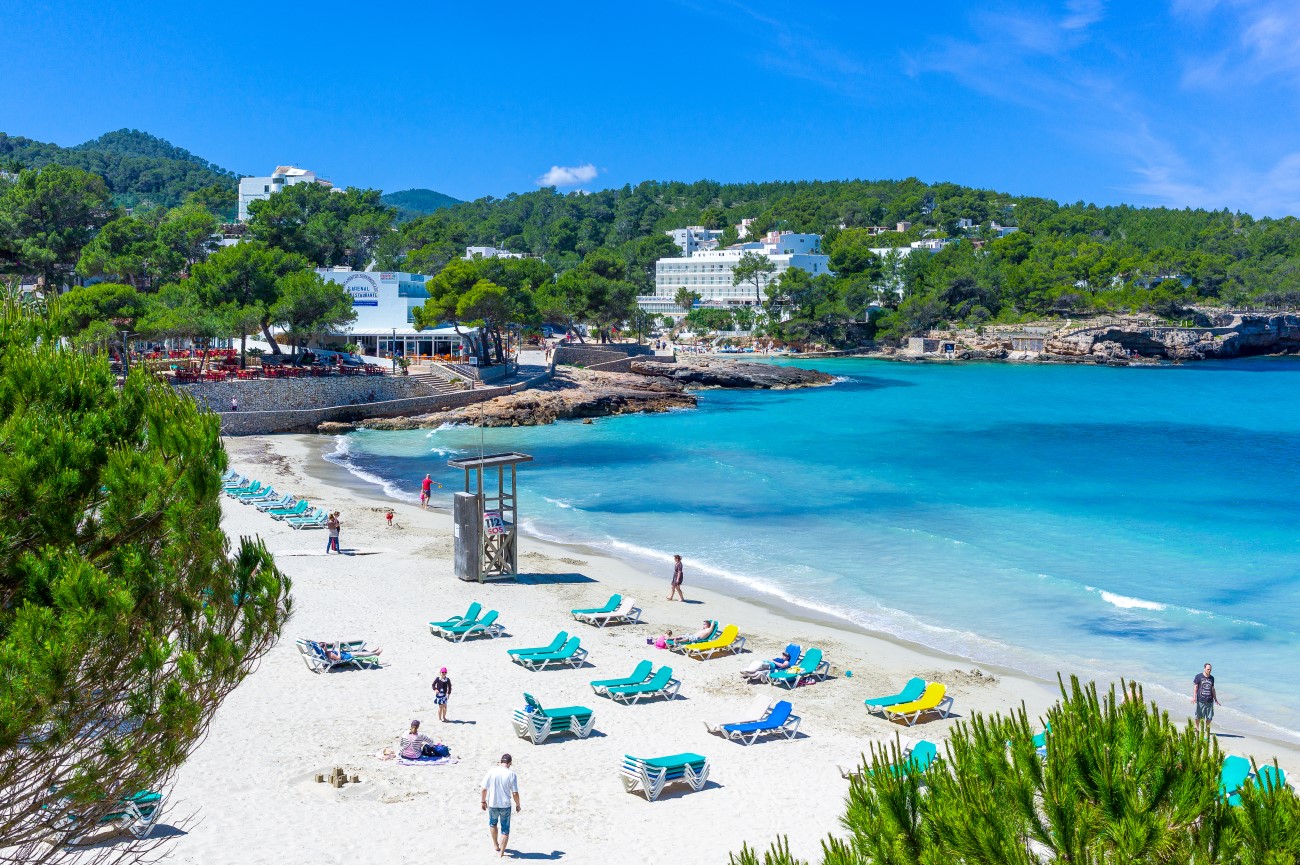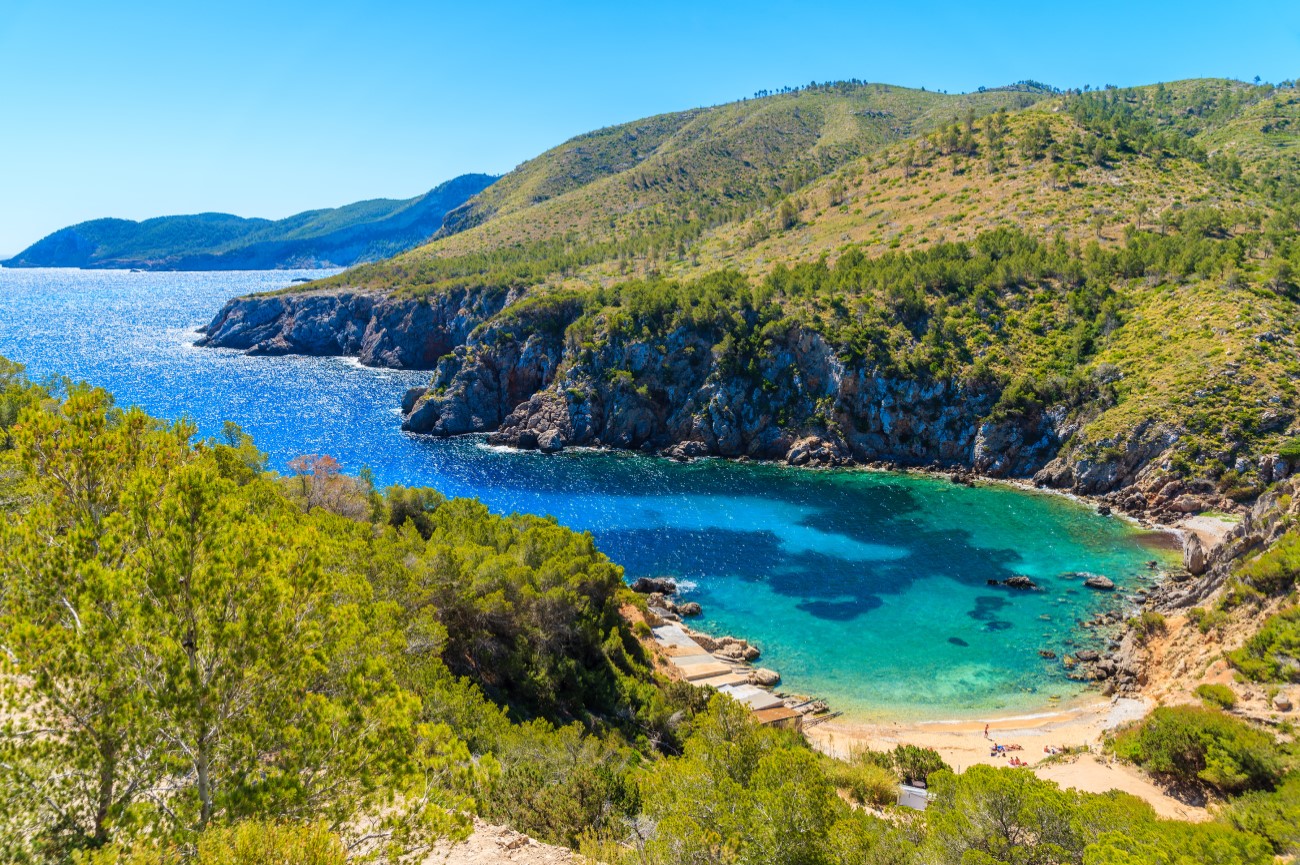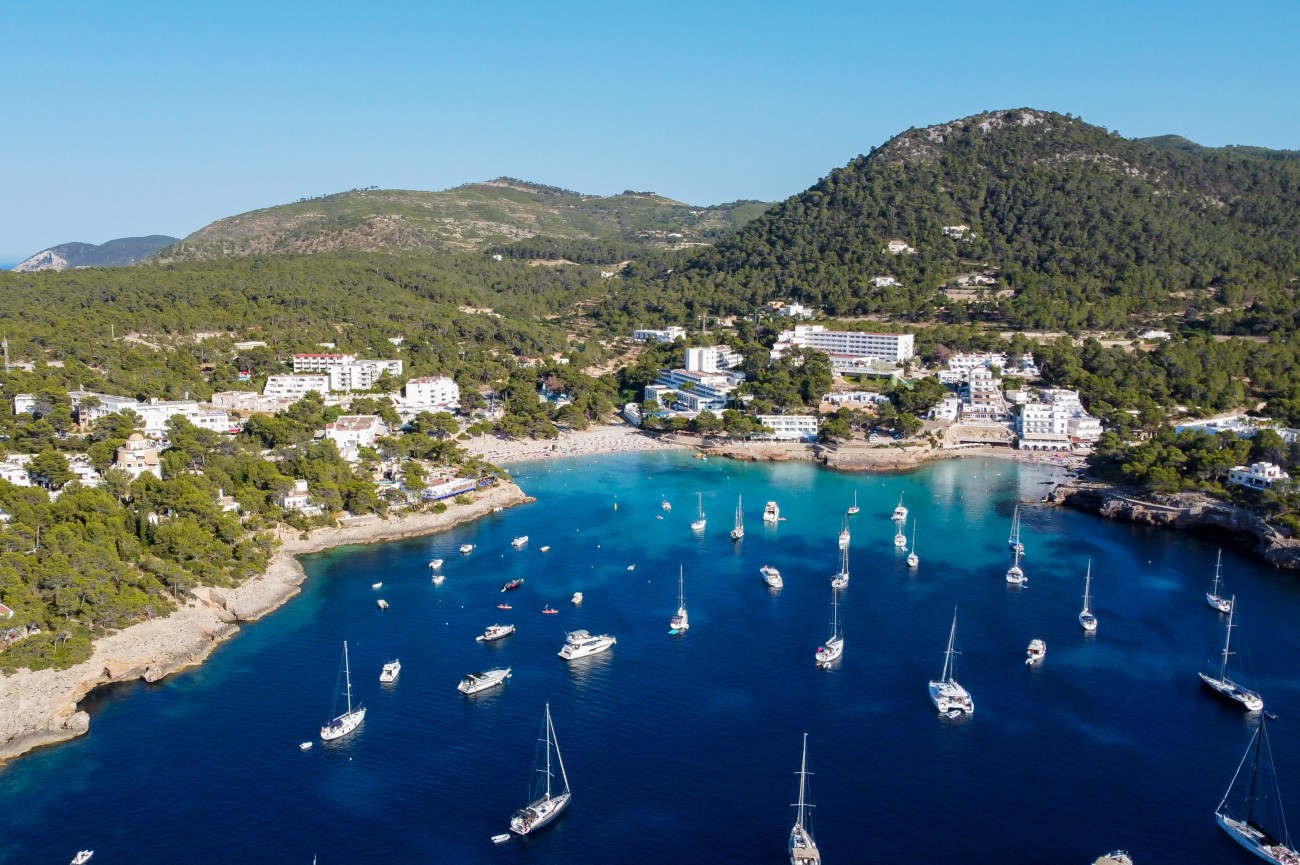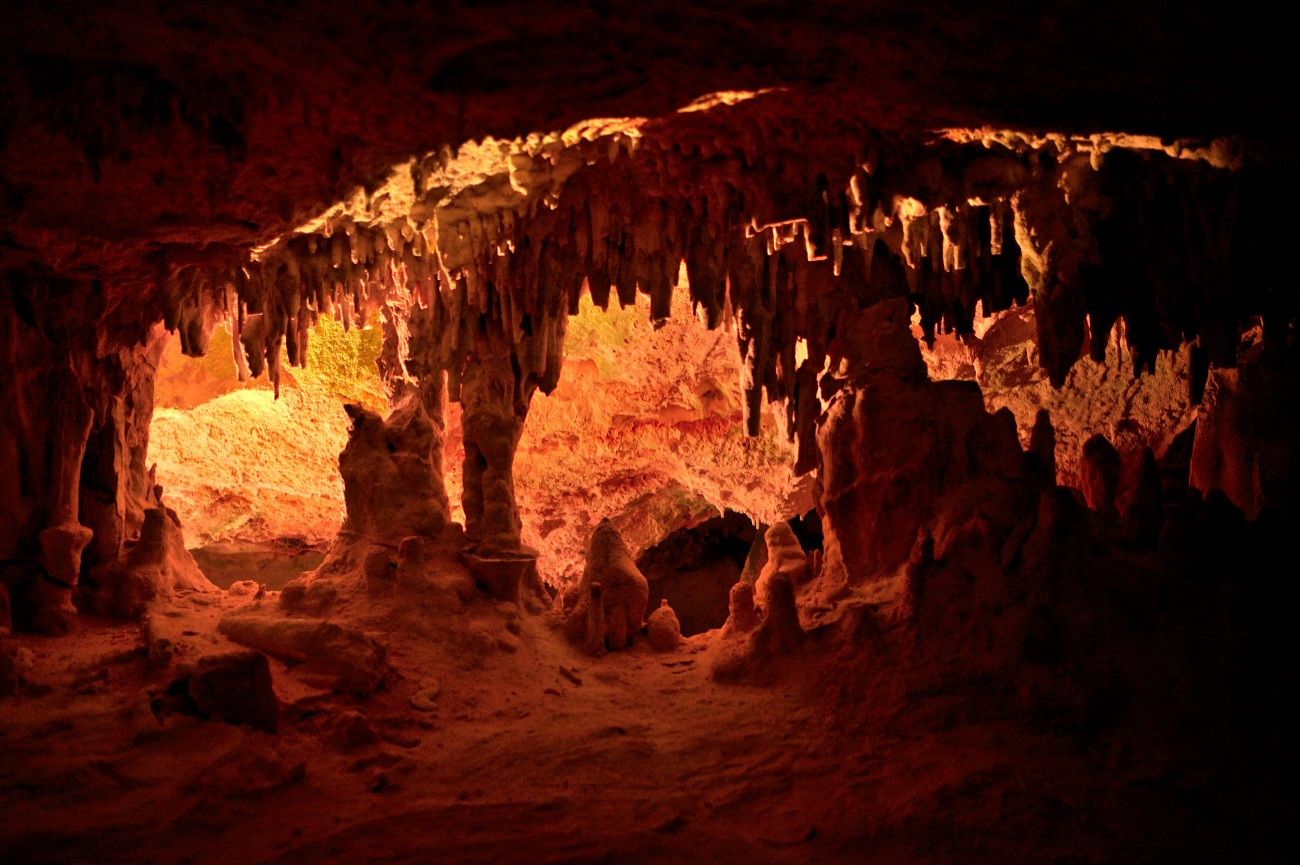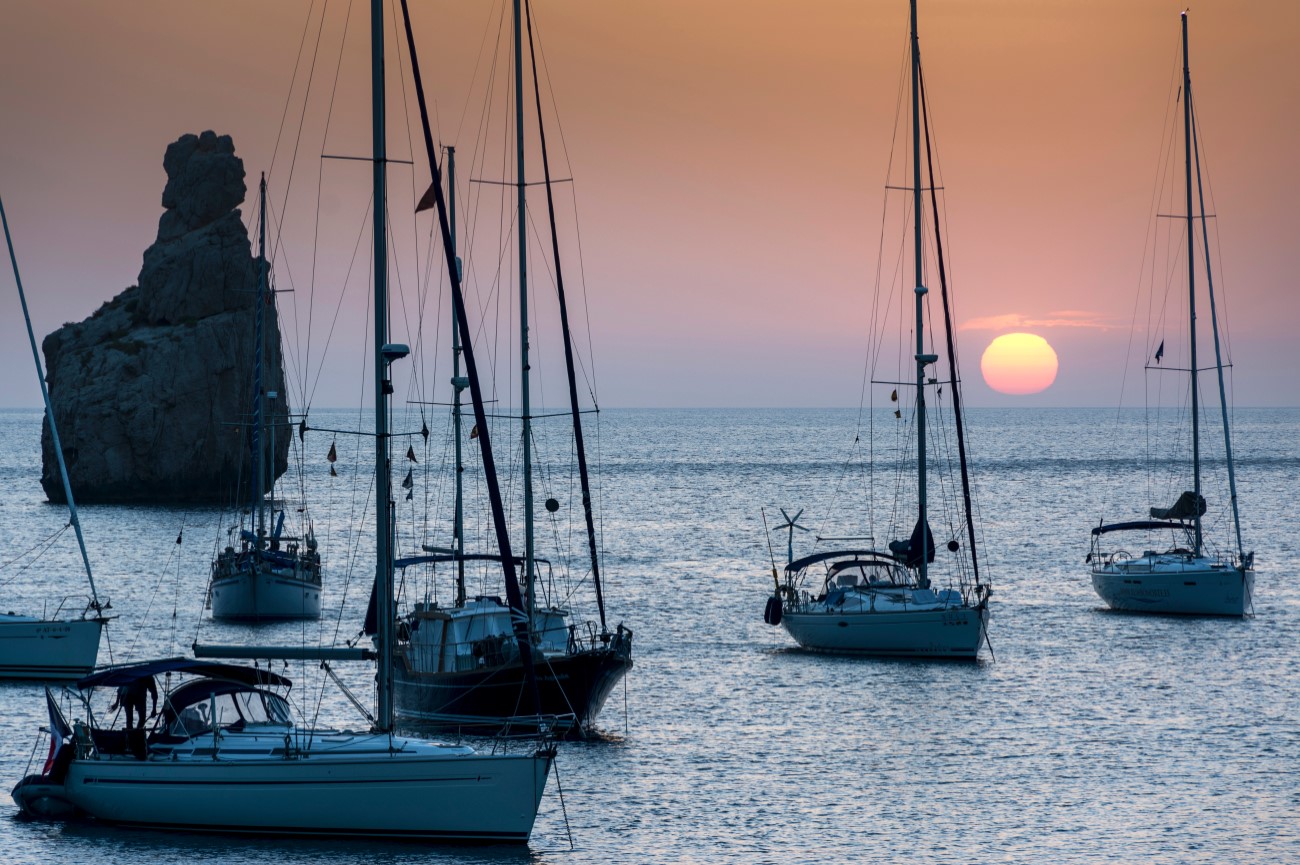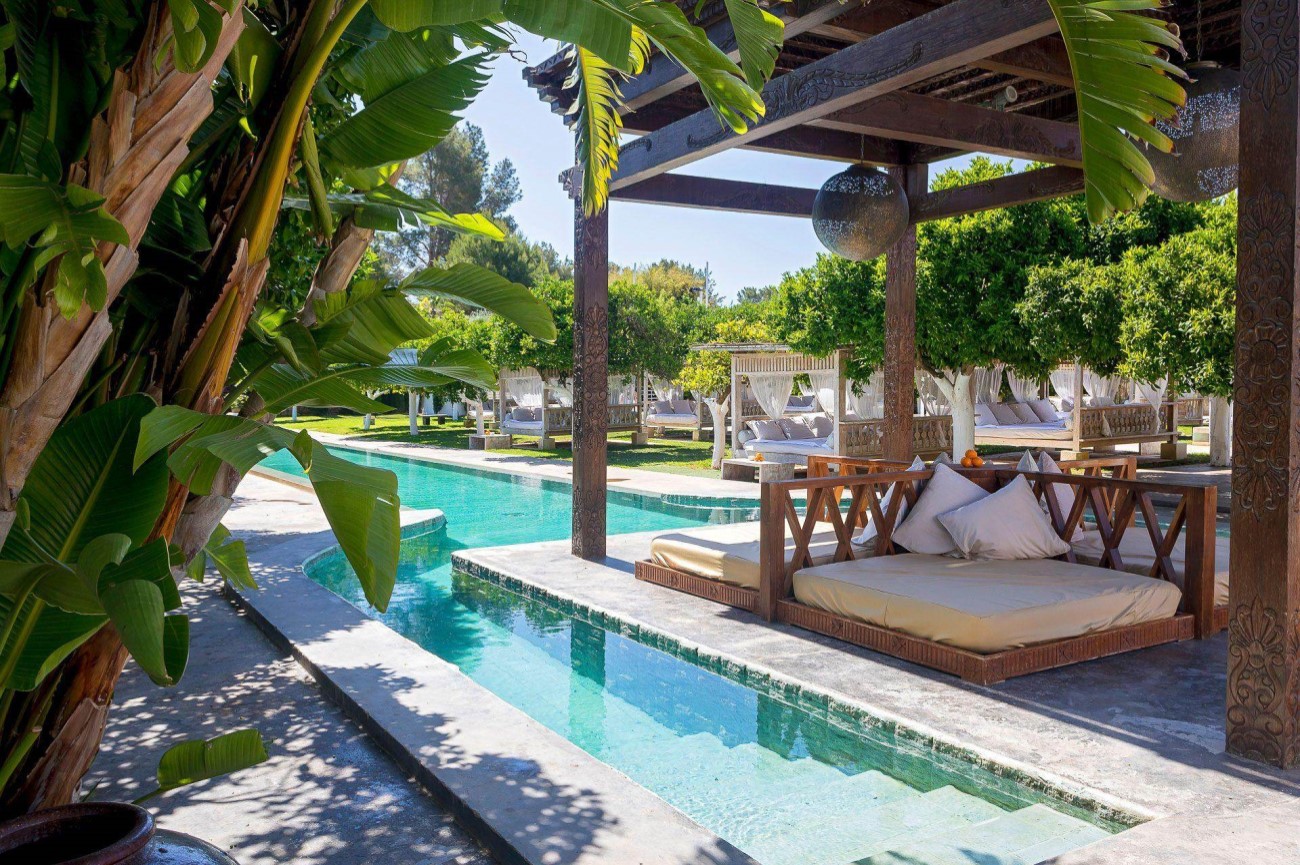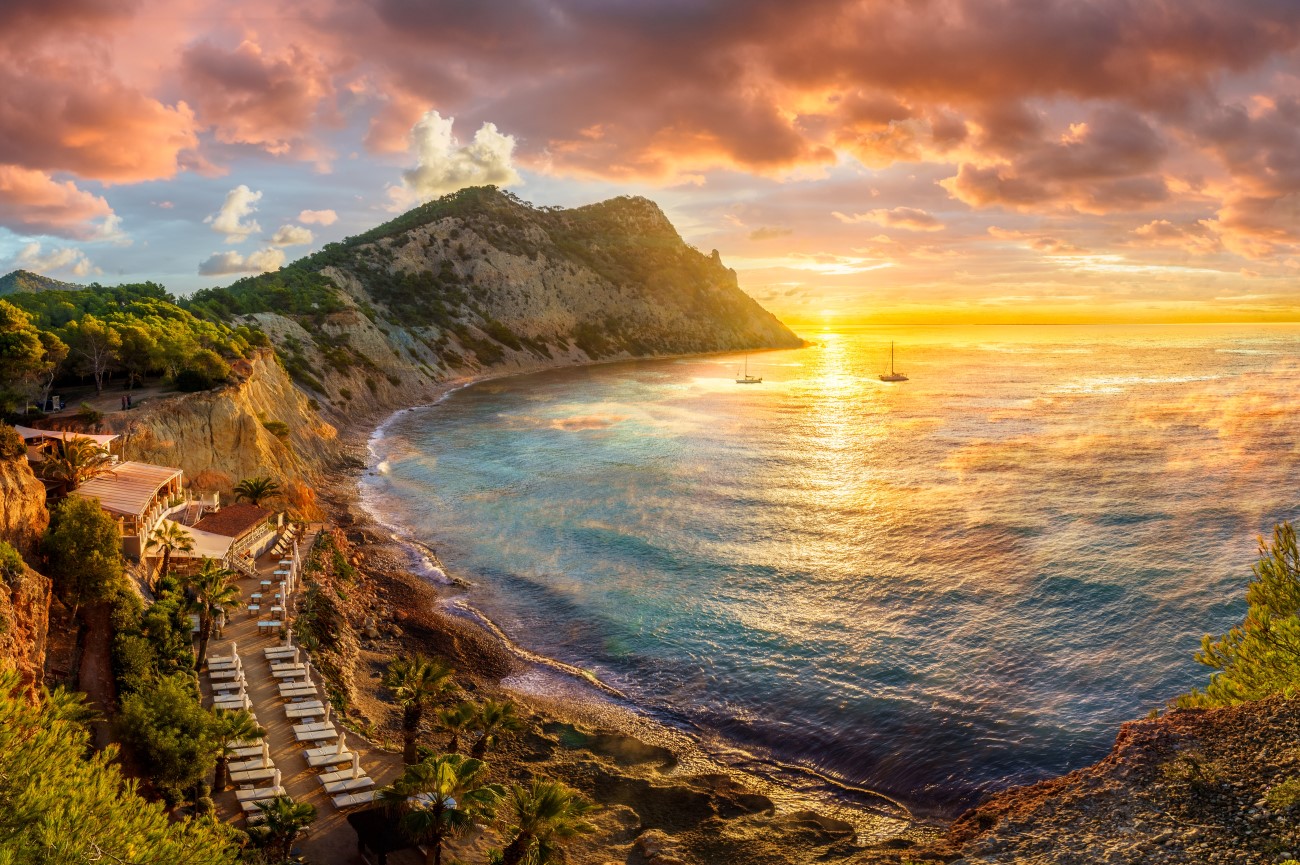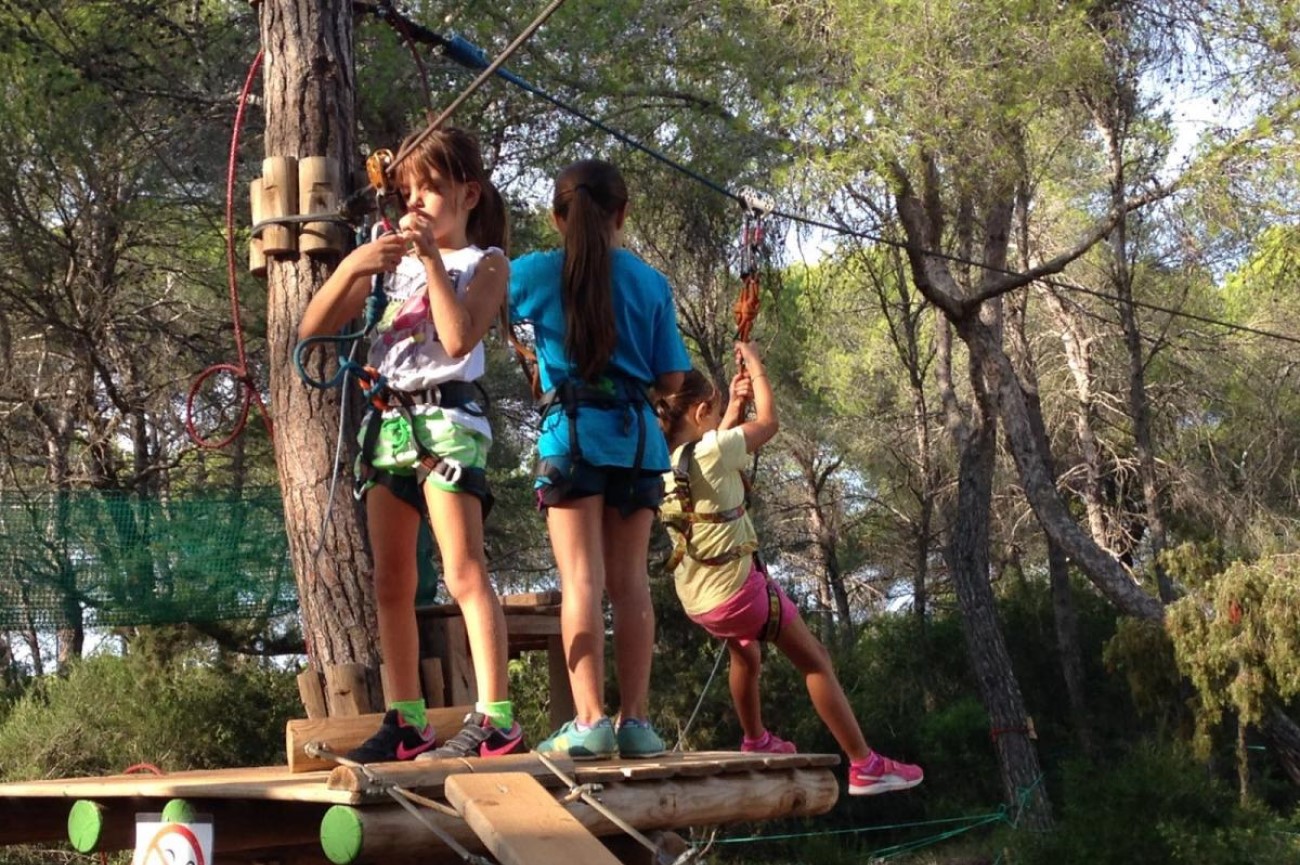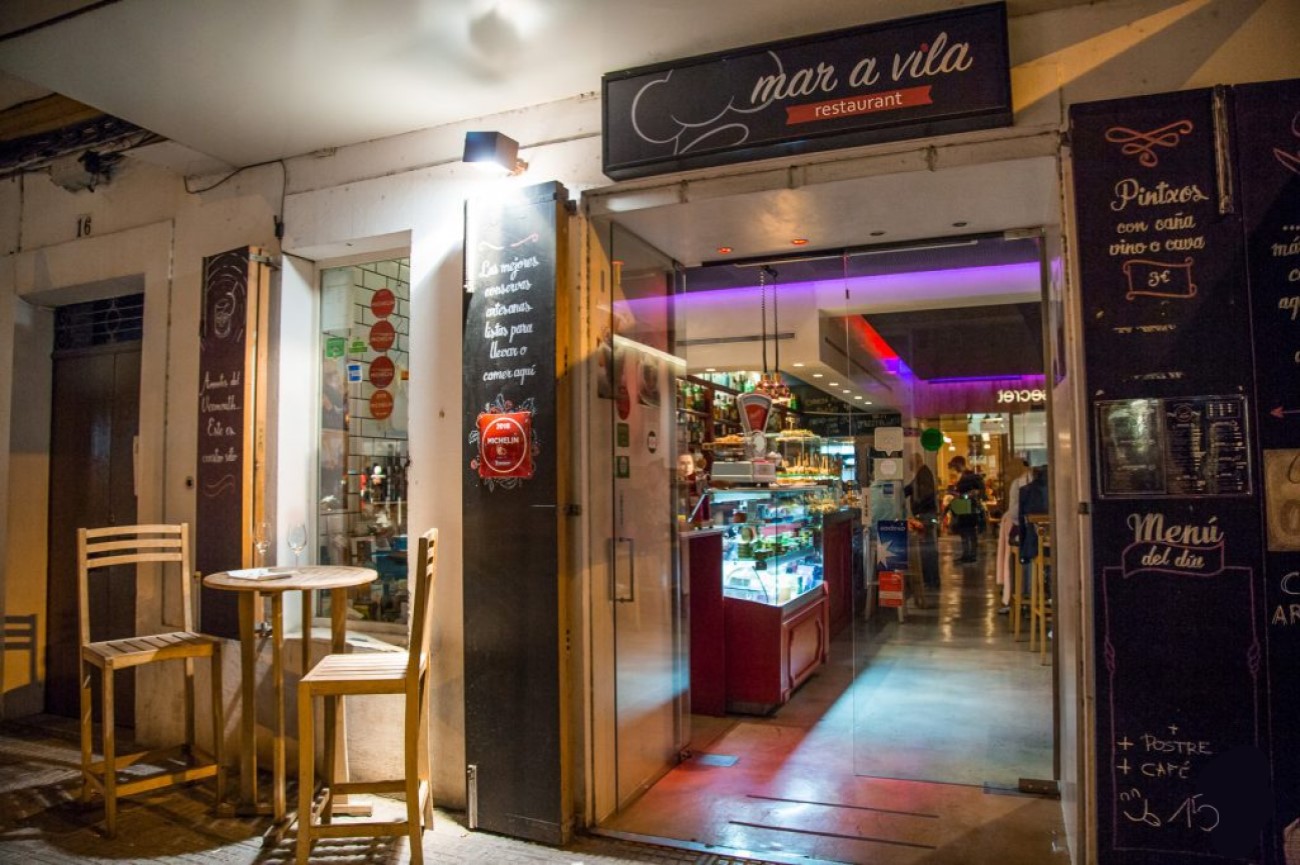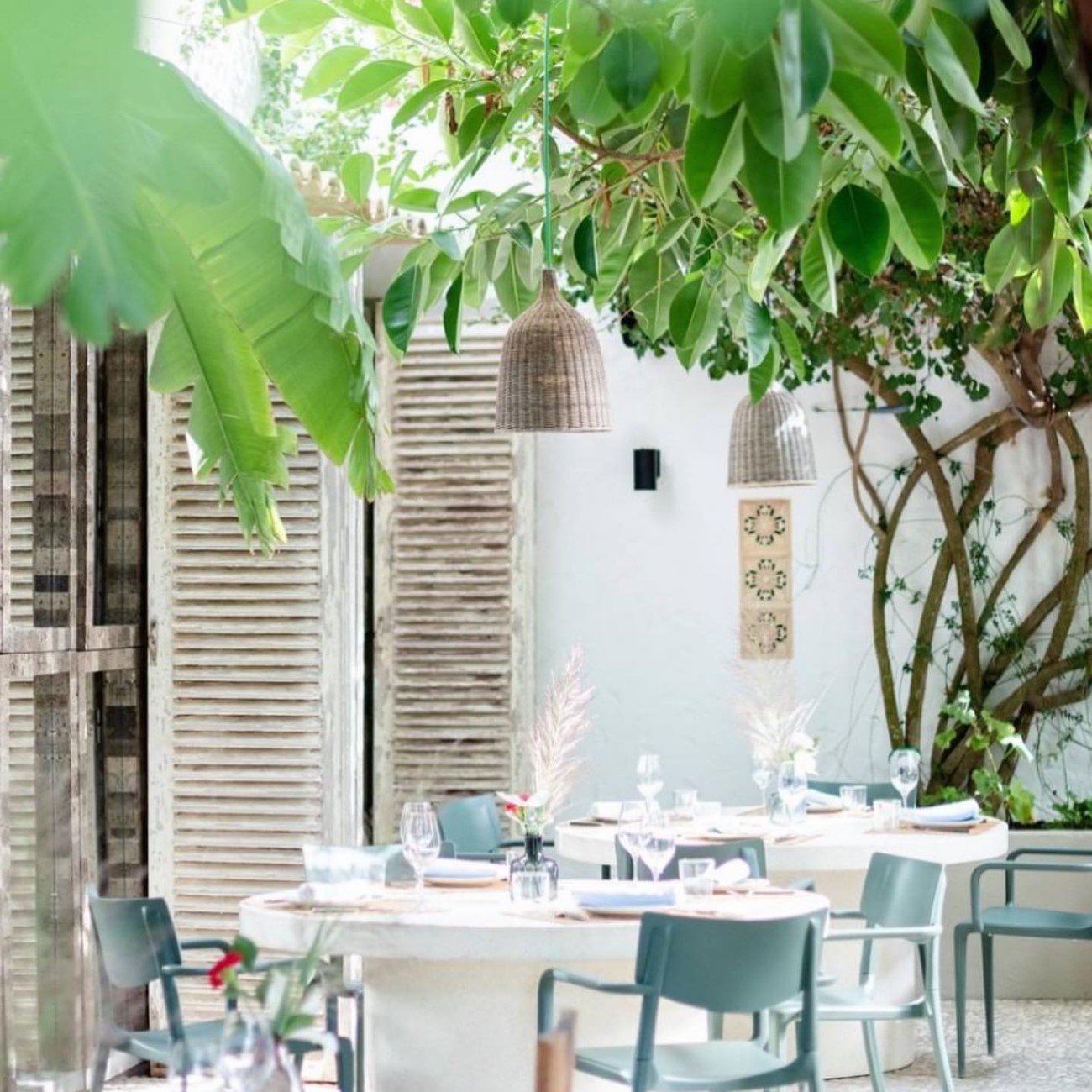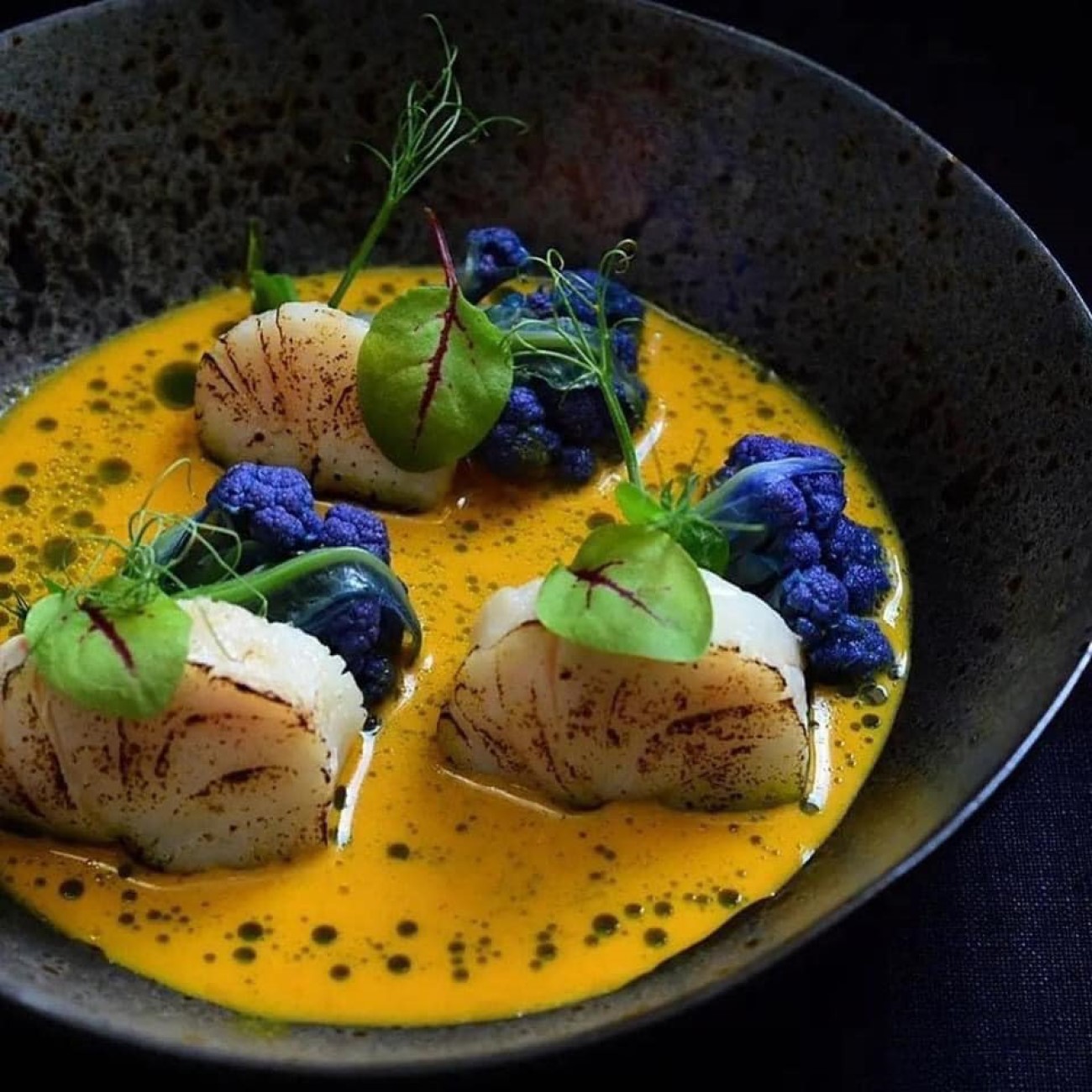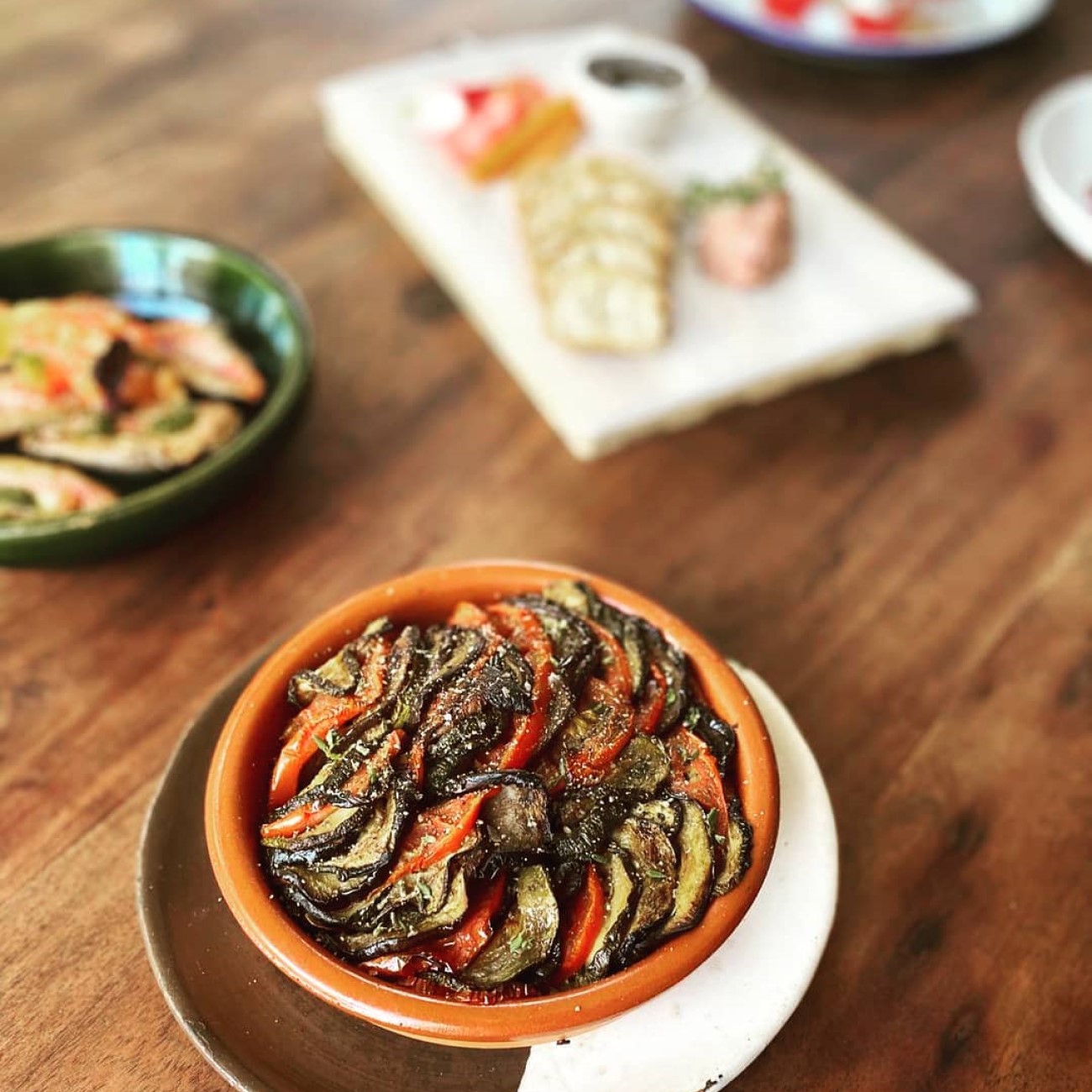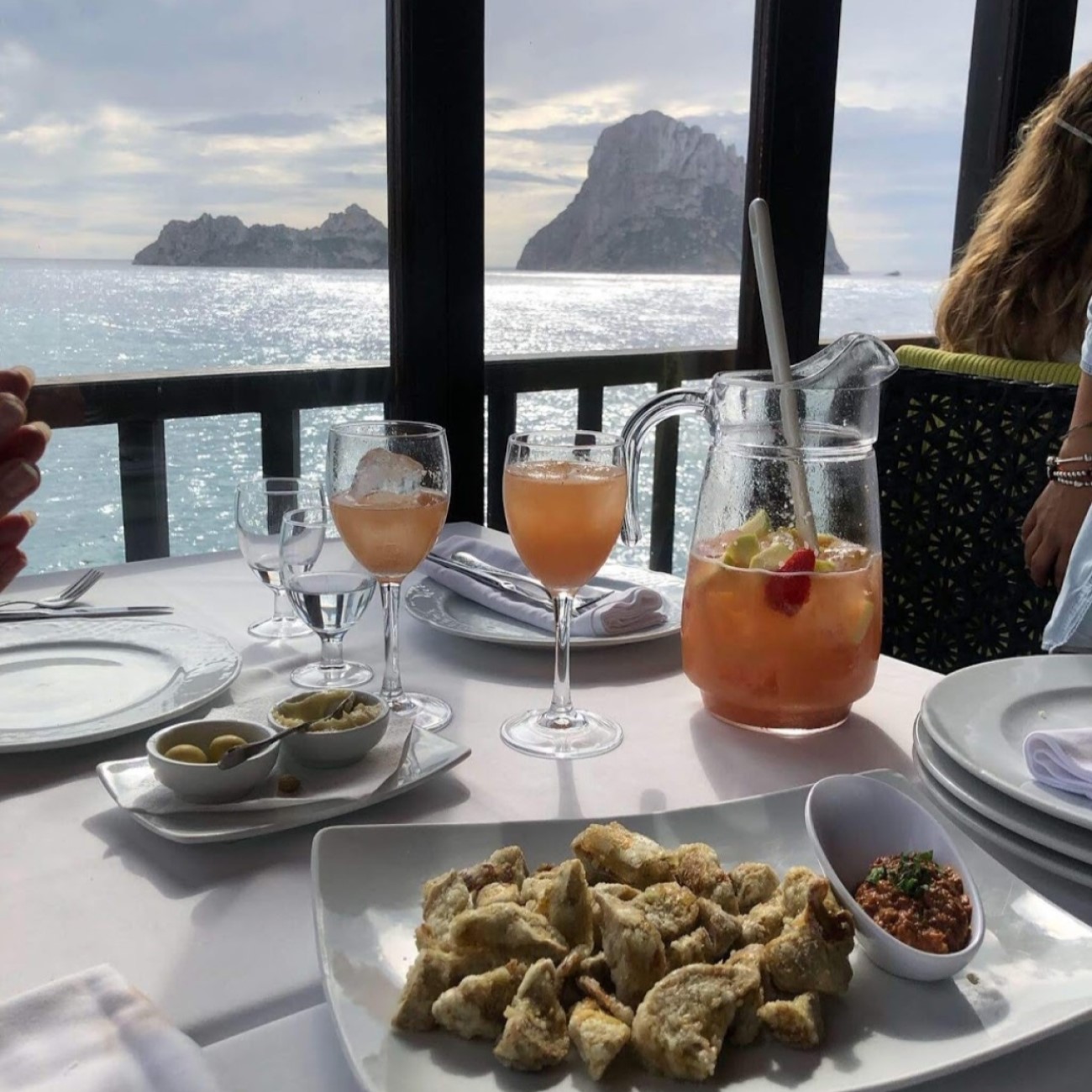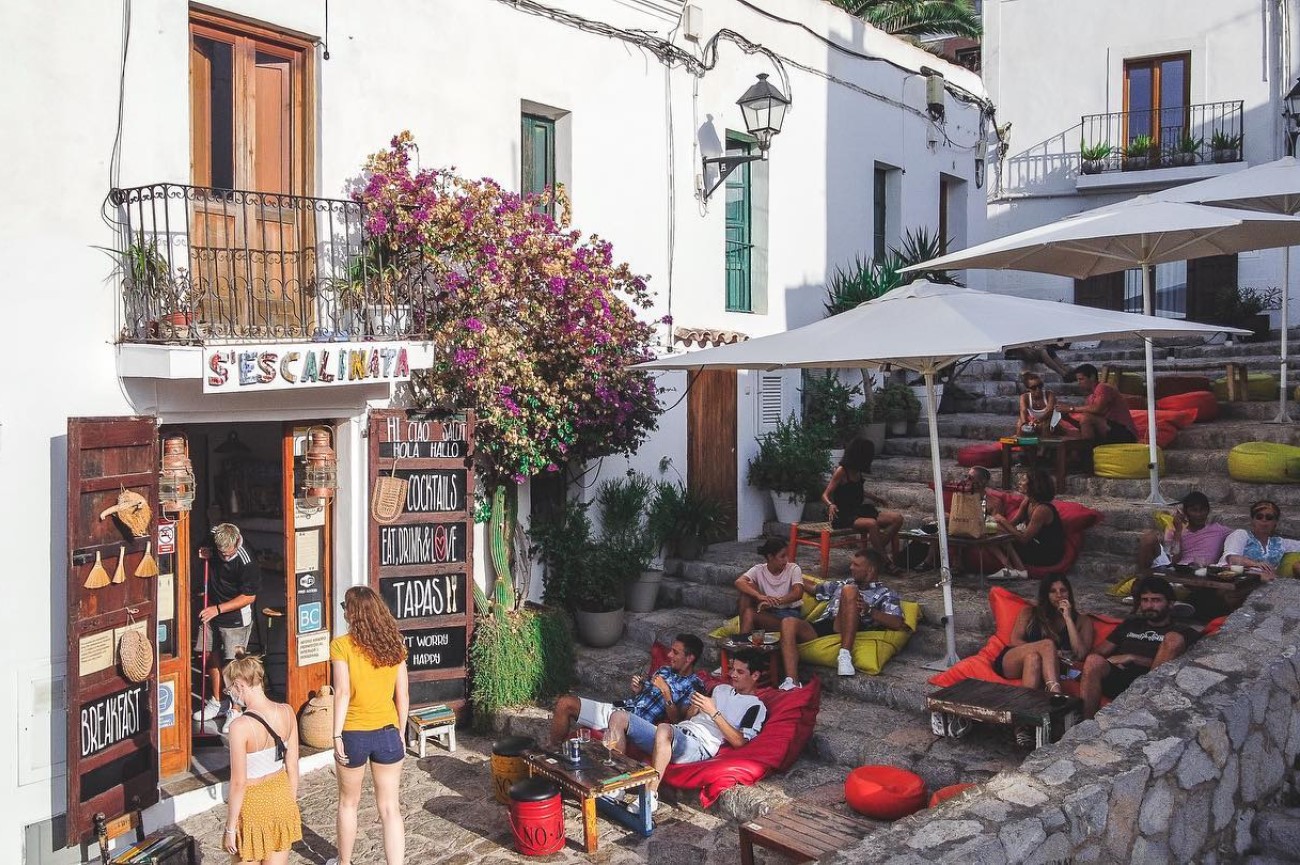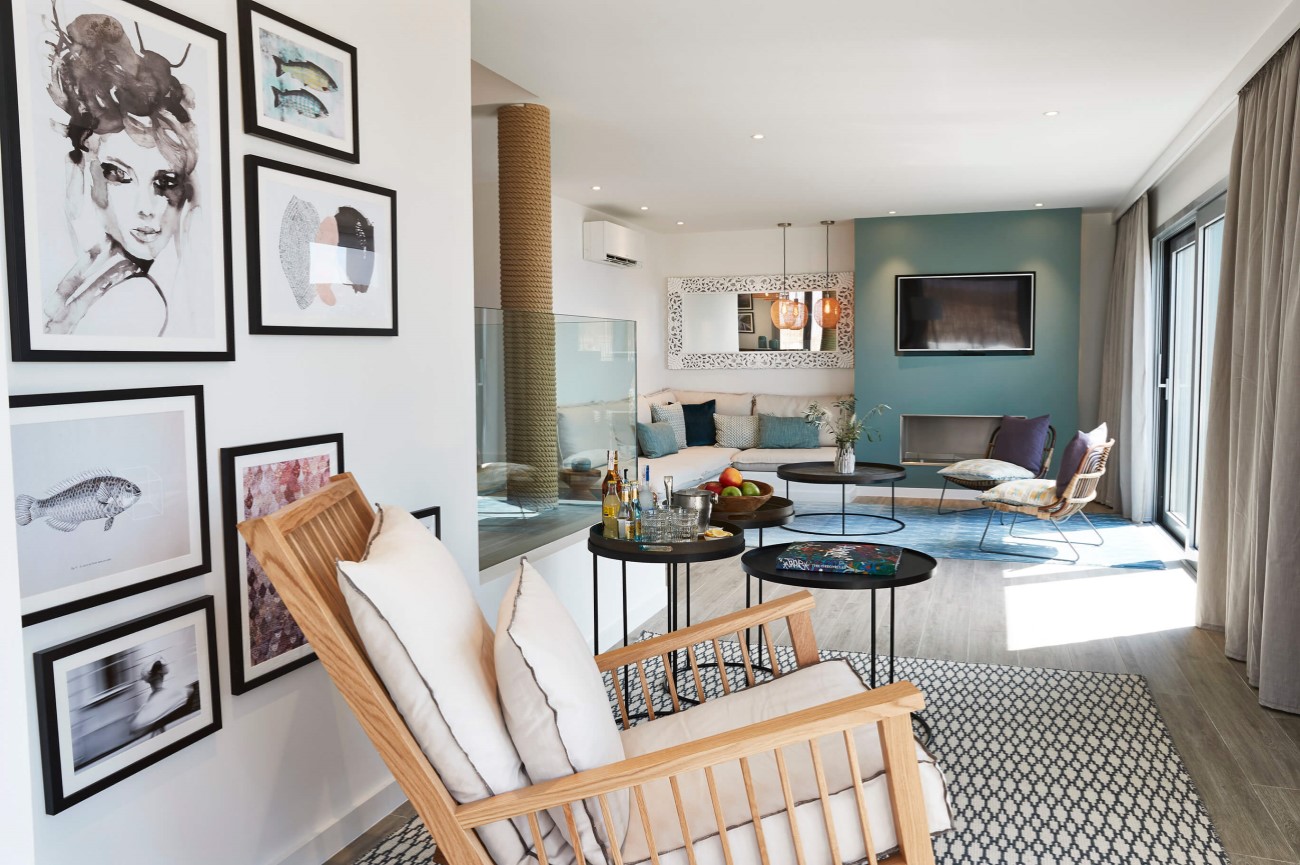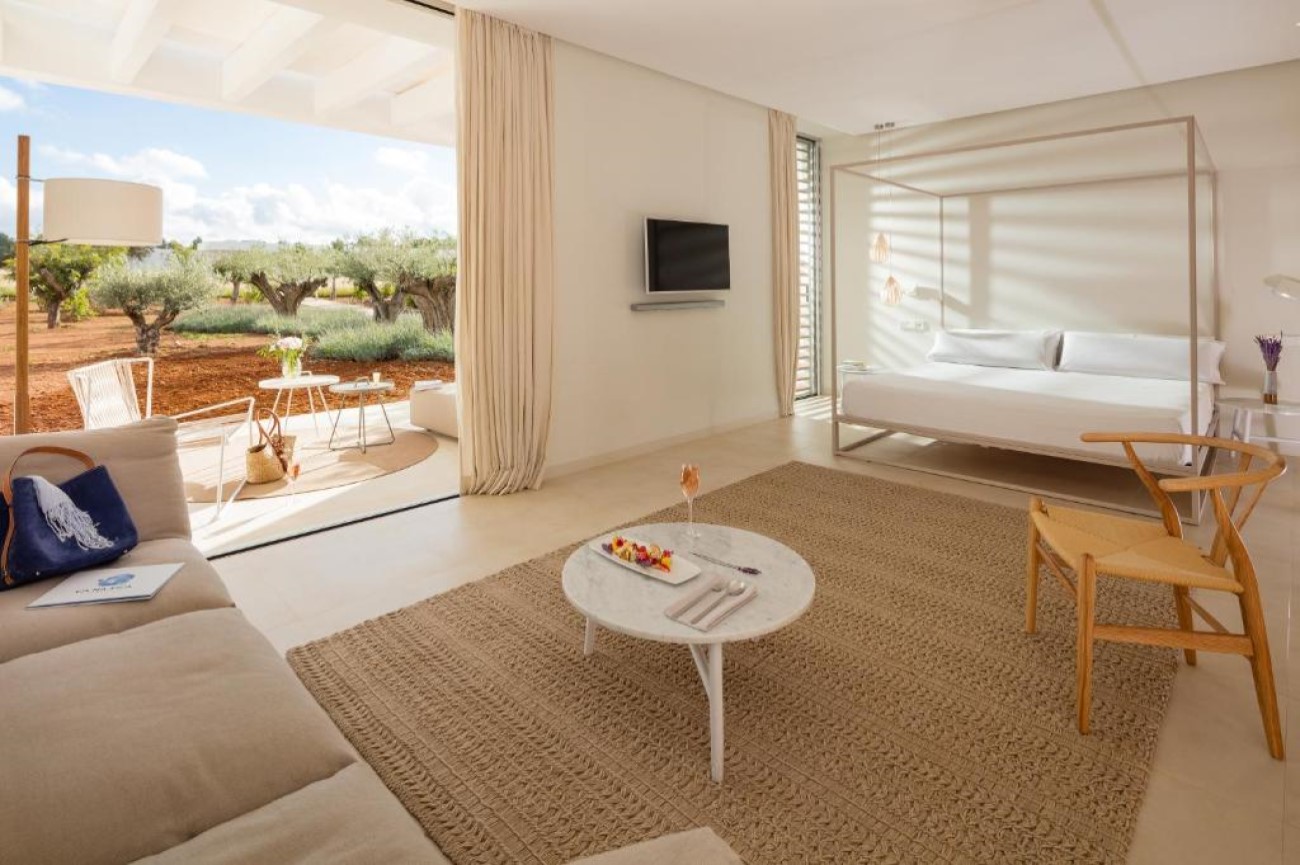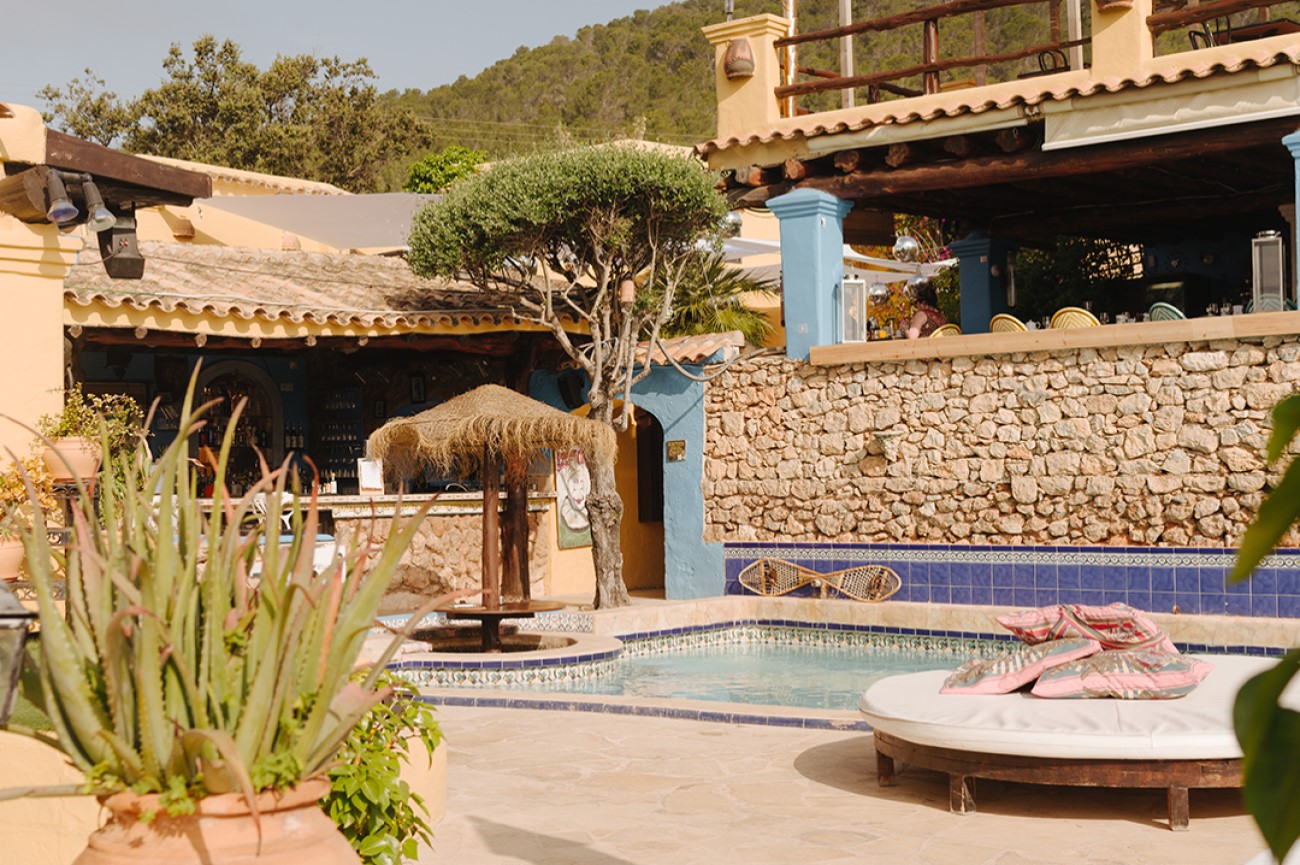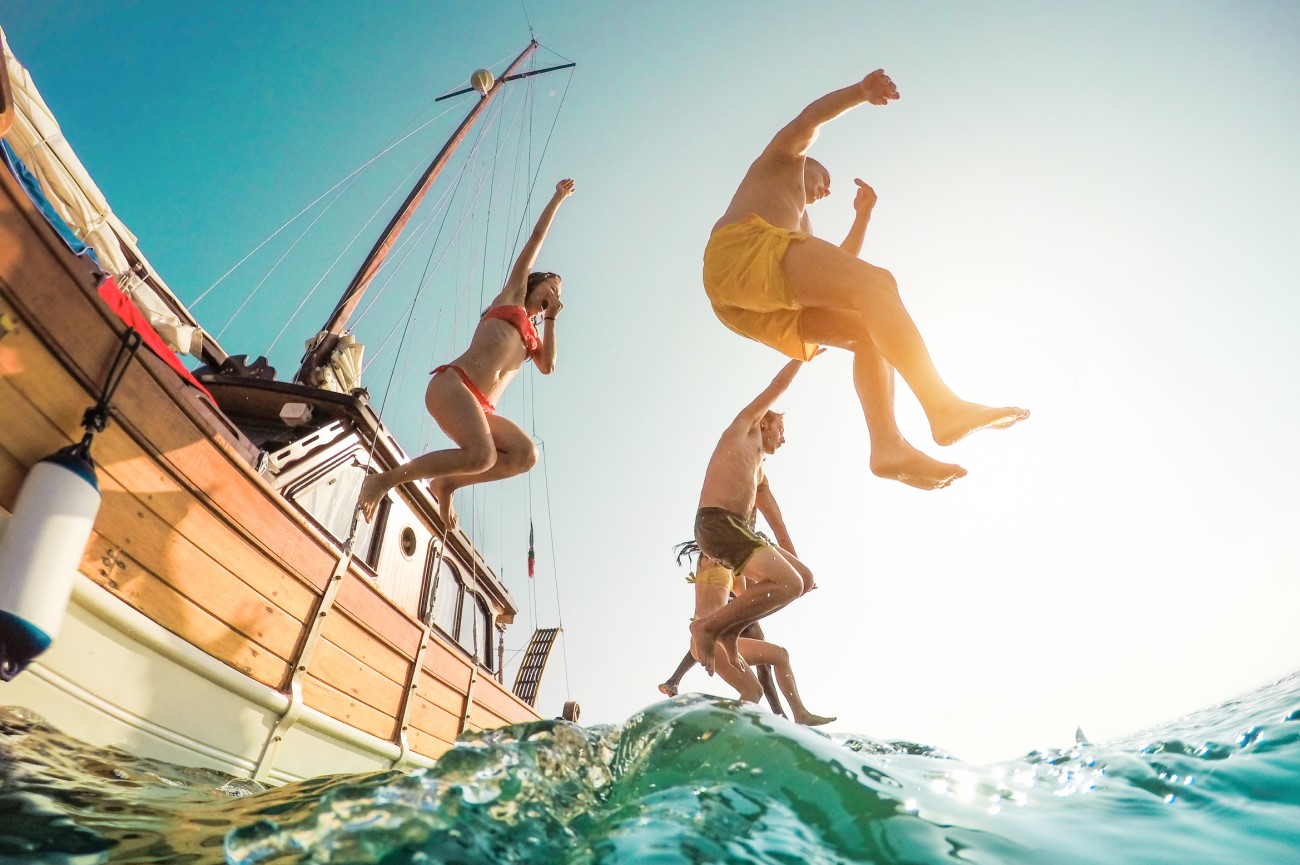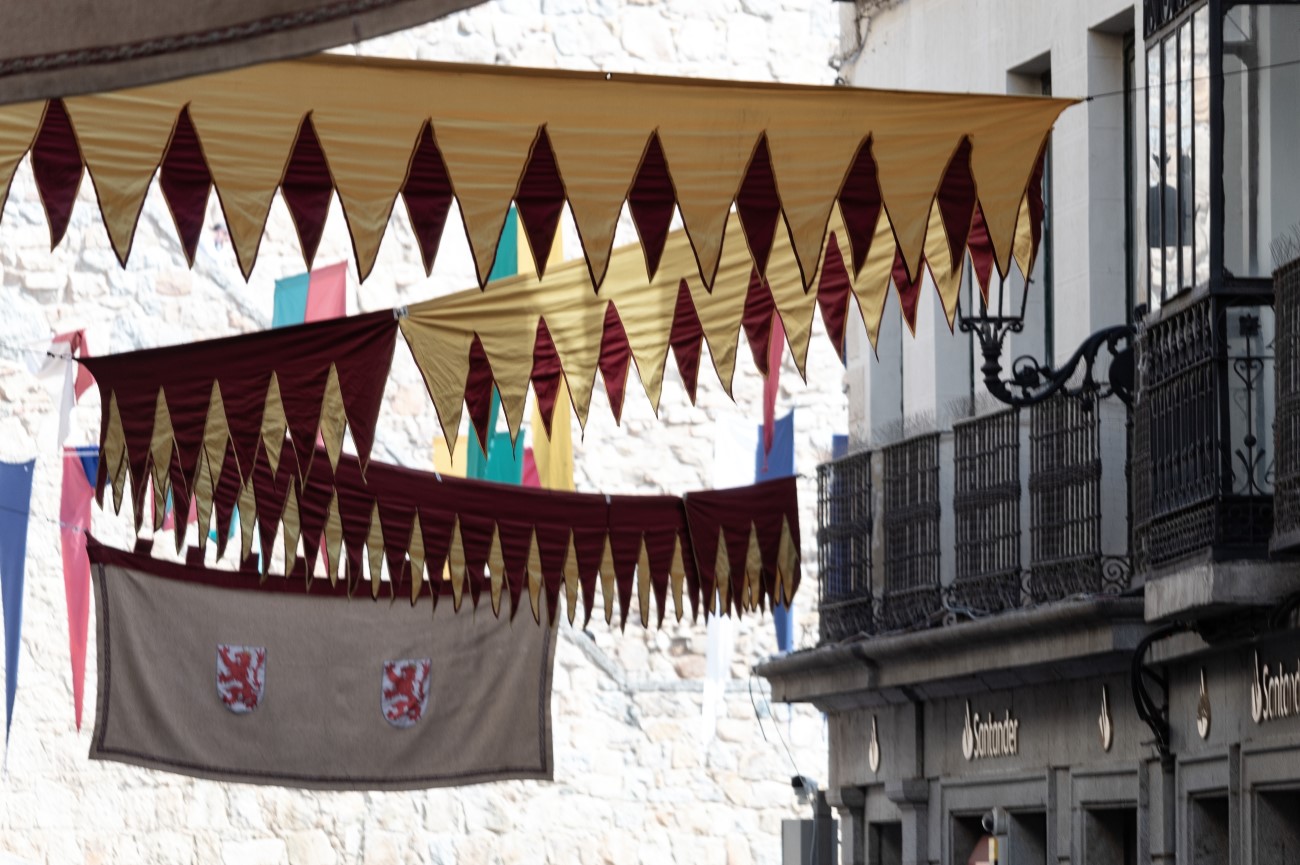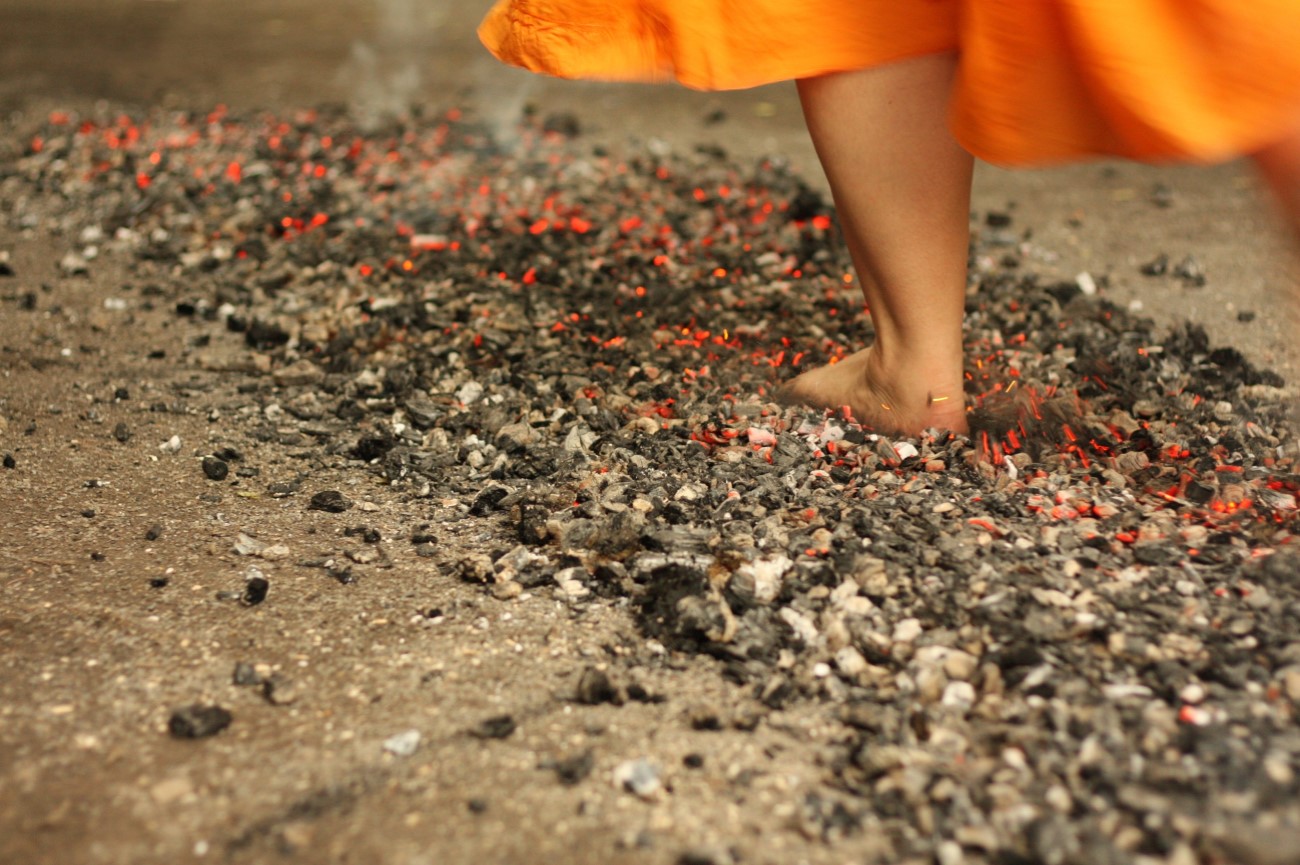Things to do in Ibiza, Spain: 5-day itinerary
There’s just something about Ibiza. The nightlife, the warming sunshine, and the white sandy beaches all add to the vibrant atmosphere of this place. Ibiza is one of the Balearics' most visited islands, and it’s easy to understand why. Some come for the neverending beach days. Others can’t get enough of the party atmosphere.
But there’s much more to experience here: the hikes, the monuments, the mouth-watering food, and let’s not forget about the magical sunsets. You can bask in the sun for as long as you want or wander through the ancient streets of the old town, considered a Unesco site. Ibiza is also the ideal harbour to visit Formentera, the tiniest island in the Balearics.
Come along as we explore the best things to do in Ibiza in this 5-day itinerary. You'll discover the top beaches and landmarks, but also find places to eat and stay during your trip.
Day 1 - South Coast

Morning: Dalt Vila (Old Town)
With its whitewashed houses, cobblestone streets and fortified walls, wandering through the Dalt Vila feels like visiting a movie set. This is Ibiza’s Old Town, where you’ll learn everything about the island’s history, from the Phoenicians foundation to its modern club scene. Enter through the Portal de Ses Taules gate and spend your morning roaming the narrow lanes of Dalt Vila. Don’t leave without visiting the Archaeological Museum on Plaza de la Catedral. Inside there are artefacts from Ibiza and Formentera covering 3.000 years of history.
Ibiza Cathedral
Within Dalt Vila, you’ll find the Ibiza Cathedral. It’s an exquisite monument combining different styles, from the original Catalan Gothic structure to the 18th-century Baroque elements. While you’re here, make sure to visit the Museu Diocesà, a museum featuring a vast collection of religious art from the 14th to 20th centuries. And, once you step outside, you’ll witness a stunning view of the old town and the city’s port.
Castell d’Eivissa
Next stop is the Castell d’Eivissa, where you’ll encounter historical buildings spanning 1,000 years. From the 8th-century keep to the Moorish tower and the 18th-century military barracks. For the best views of the whole site, head to the bastion Baluard de Sant Bernat on the southern end. Other sections have been converted into exhibition spaces like the Baluard de Sant Jaume and the Baluard de Sant Pere.
Museu d'Art Contemporani d'Eivissa
If you’re an art enthusiast, don’t miss a visit to the Museu d’Art Contemporani d’Eivissa. Occupying a former armoury, this museum is dedicated to contemporary art, mostly made by artists with ties to Ibiza. The exhibits include works from local creators like Antoni Marí Ribas and Rafel Tur i Costa, alongside international names such as Gilbert Herreyns and Erwin Broner. The glass floor allows you to see the Carthaginian dwellings uncovered during the museum's renovations in 2012.
Afternoon: Platja d’en Bossa
After touring the island’s historical sites, it’s time to unwind at the beach. Platja d’en Bossa is the longest beach in Ibiza, making it the perfect place to hunker down for the afternoon. If you’re looking for something a bit more active, you can always get on some jet skis or rent a paddleboat. There are also many beachside bars where you can stop for a snack and a drink. Come back after the sun sets and dance until dawn at Ushuaia or Space, two of the island’s largest nightclubs.
Ses Salines
From Platja d’en Bossa, drive off to the Salines. These salt pans are part of the Ses Salines Natural Park. Even though salt production ended in 1984, you can still see salt crystals forming in the pools. The park is also home to hundreds of bird species, including flamingos, waders and gulls. If you’re looking to catch the flamingos, you should come around August to October.
Platja de Ses Salines
Since you’re in the area, make sure to visit the beach. It’s all you’ve ever dreamed of: turquoise waters, white sand and dunes, surrounded by pine trees and lively chiringuitos (small bars serving drinks and tapas). Try the northwest area if you’re visiting with the family. Go southeast if you’re looking for something a bit more relaxed or to practise nudism.
Sa Pedrera de Cala d’Hort
If you’re planning to walk down Sa Pedrera, make sure to bring some comfortable shoes. The trail can be a bit challenging, but it’s worth it for the stunning coastal views. Locals nicknamed this area Altantis because the rock formations look like the infamous abandoned city. It takes about 40 minutes to reach the water, the ideal spot for a swim.
Es Vedrá
On the edge of Ibiza’s south coast, you’ll find one of the most emblematic spots on the island — the Es Vedrá rock. The best place to see it is from the Cap Blanc beach or the lookout point near Torre des Savinar. It's the ideal place to watch one of Ibiza’s magical sunsets.
Port Area
Back in Ibiza town, you can end the evening walking around the port, where fishermen’s houses mix with boutique shops and market stalls. Make the most of it by ordering a drink at one of the terraces. Then continue down to the marina to admire the flashy yachts. Make sure to pass by Botafoch and Marina Ibiza, the island’s upmarket marinas. It's here you’ll find cruisers of famous figures, as well as high-end bars, restaurants and famous clubs like Lío and Pacha.
Day 1 - Ibiza South Coast Tour Map
Day 2 - East Coast

Morning: Eglésia de Jesús
It’s time to kick off another day exploring Ibiza’s beautiful East coast. The first stop on the itinerary is the Eglésia de Jesús, a striking whitewashed church 2km north of the Talamanca beach. Constructed in 1466, it stands out with its impressive Gothic altarpiece. The Virgin’s face depicted here is seen as a masterpiece of Balearic medieval iconography.
Cala Llonga
From the village of Jesús, it’s only a few minutes to Cala Llonga. This sheltered beach is ideal for families. There’s a kids’ playground on the sand and a small fair that takes place in the summer with trampolines and bumper cars in the resort area. You’ll also find plenty of cafés around where you can grab something to eat or drink.
Santa Eulària
Continue driving east, and you’ll soon reach Santa Eulària. This resort town feels miles away from the bustling nightlife scene of Ibiza. Families come here to enjoy the white sandy beaches and walk along the seafront promenade. You’ll love this area even more if you’re a golf fan, as this is where you’ll find Ibiza’s only golf course.
After long walks on the beach and endless dives, you have to go up to the Puig de Missa, at the southwest end of Santa Eulària. You can climb the stairs from Carrer de Sant Jaume (the most scenic route) or follow the trail from Santa Eulària’s promenade. This was where people used to hide when the island suffered various pirates’ attacks. And it’s right at the top that you can visit a fortress-church with its defence tower, as well as a couple of fascinating museums.
Afternoon: Cala Mastella
Surrounded by magnificent pine trees, Cala Mastella is a small cove about 9km northeast of Santa Eulària. It gets especially busy during the high season. That’s when the seasonal kiosks emerge, serving mojitos and bocadillos. If you’re a seafood lover, don’t miss the chance of visiting the renowned restaurant El Bigotes.
Sant Carles de Peralta and Las Dalias Market
Carry on to the Sant Carles de Peralta, a charming little village dating back to the 18th century. It’s one of the few places where you can still feel the atmosphere of Ibiza’s old rural parishes. Every weekend, the village comes alive thanks to the Las Dalias hippy market, which started in 1954. You can shop for anything from flower crowns to handmade bags and floaty dresses. But there’s much more happening, including live music, fortune-telling, massages and food stalls.
Santa Gertrudis de Fruitera
End the day touring the village of Santa Gertrudis de Fruitera. This is where many of the island’s artists live and showcase their work. You can find their pieces in the town’s galleries, craft shops and even cafés like Bar Costa. Before you leave, make sure to wander around the main square and admire the village’s 18th-century church.
Day 2 - Ibiza East Coast Tour Map
Day 3 - Day trip from Ibiza to Formentera

Morning: La Savina Port
If you’re dreaming of deserted beaches with crystal-clear waters, then you’ll enjoy a trip to the island of Formentera, one of the Balearics hidden gems. There are regular ferries from Ibiza Town to La Savina port. Once you get there, the best thing to do is to rent a bicycle or a scooter so you can explore every corner of the island.
Pay a visit to Sant Francesc Xavier, Formentera’s capital, and then head off to one of the paradisiacal beaches like Playa de Ses Illetes in Trucador or Calò Des Mort down south. It’s the perfect getaway from busy Ibiza.
Sant Francesc Xavier
Start off with a tour of the main town, Sant Francesc Xavier. In the central square, two buildings stand out with their whitewashed façades. On one end is the Town Hall. On the other, an 18th-century fortress church. Formentera was abandoned in the 15th century, and this was the first church erected when locals resettled here.
Trucador Peninsula
After exploring the town, head north towards the Trucador peninsula. Here you’ll find an endless stretch of white sandy beaches with translucent waters. Along with Es Pujols, these beaches are where most people head to when they visit Formentera. The peninsula nearly touches the small island of Espalmador.
Espalmador
It’s possible to swim to Espalmador from the Trucador Peninsula, but beware of the currents and only do it in good conditions. If you really want to get there, it’s better to hop on the Barca Bahía boat from La Savina. Settle down on the beach and enjoy this desert island with nothing but dunes around you.
Afternoon: Peninsula of La Mola
Surrounded by massive coastal cliffs, La Mola is the highest section of Formentera. At about 200m high, this peninsula houses the village of El Pilar de la Mola and a 19th century lighthouse, which you can admire from the outside. The area is pretty much deserted, but there’s a small café where you can stop for a drink.
Migjorn
Finally, explore Formentera’s south coast, known as Migjorn. The area stretches for about 5km with plenty of white sandy beaches and small coves to explore. These include Platja Migjorn, the longest beach on the island. It’s divided into four sections: Ca Marí, the closest to Sant Ferran village; Migjorn, the central part; Es Arenals, the most touristy stretch; and Es Copinar, at the edge of the coast. It’s near this last one that you’ll spot the stunning Calò Des Mort beach. You can cycle along the coast before heading back to La Savina for the boat.
Day 3 - Ibiza Coast Tour Map
Day 4 - West Coast

Morning: Sa Caleta
Today we’re off to explore the west coast of Ibiza. It’s just a few miles from the airport, but you’ll barely notice that once you arrive at Sa Caleta. This picturesque cove features three beaches: a long sandy stretch and two tiny pebbly areas. There’s also a restaurant here called Restaurante Sa Caleta, open in the summer only. They often organise massages and yoga classes.
Es Bol Nou
Near Sa Caleta, you’ll find Es Bol Nou, a tiny sandy beach known for its clay properties. You’ll often spot locals making a mud mixture to exfoliate the skin, a practice that is said to eliminate mosquito bites. Wait for the mix to dry and then take a dip in the water to wash it away.
Hike Sa Talaia
If you’re a fan of hiking, you will love climbing up to Sa Talaia. At 475 metres, it’s the highest peak in Ibiza. The trail is 2.5km long, starting from the Sant Josep village. It takes around one hour to reach the top. Along the way, you’ll enjoy spectacular views of the island. Wear comfortable shoes and look out for the Jineta, a ferret/cat-like species that can usually be found relaxing among the trees. If you’re too tired for the hike, you can always drive up to the peak.
Cala Tarida
After Sa Talaia, head towards the coast to visit Cala Tarida. This beautiful bay features two beaches and the stylish Cotton Beach Club. Villas and hotels surround the area, which means it can get quite busy in the summer. But it’s still worth coming here, especially if you like jumping in the water from the cliffs, as they’re not too high here.
Cala Llentia
A bit further up from Tarida is the Cala Llentia. It’s one of the least crowded beaches on the island (even during summer). Sometimes the waves can be a bit strong, but most of the time, it’s very family-friendly. Between this beach and Cala Codolar, you'll find Las Puertas Can Soleil, a striking door adorned with etchings, Arabic motifs and a hand of Fatima. But this isn’t the only monument around. There’s another one nearby called Time and Space, which features 13 basalt columns designed by Andrew Rodgers.
Afternoon: Cala Escondida
Start your afternoon with a visit to Cala Escondida – a tiny cove found on the way to Cala Comte. To reach this beach, you’ll need to go over a slight rocky slope and then down some stairs. Once you’re there, you can grab a drink at the chiringuito (said to be the most environmentally-friendly and sustainable beach bar on the island). Sit, relax and enjoy the beautiful sunset to come.
Cala Comte
Locals and tourists love Cala Comte. They believe this is Ibiza’s most beautiful beach. Sheltered by rocky formations, the fine sand and the turquoise waters are something to behold here. Behind the rocks, you’ll find a series of bars where you can settle down with a cocktail. The beach is very close to San Antonio and quite popular during summer, as you can easily reach it by ferry or bus.
Cala Saladeta
Continue driving towards the north coast. When you get there, you can visit the Cala Saladeta. Framed by pine trees, this little beach is famous for its stunning crystal clear waters. Some say these are the bluest waters on the island. It’s about a 10-minute drive from Santo Antonio, and then you’ll need to walk down a steep trail to reach the sand.
Cala Gracioneta
Cala Gracioneta is another beautiful beach with a restaurant where you can grab a bite to eat. The transparent waters make this the perfect spot to snorkel. A small rocky formation separates this tiny beach from the Cala Gració.
San Antonio
San Antonio is one of the best-known areas in Ibiza to party, but even if you’re not heading to the club, you should still drop by. It’s one of the best places to watch the sun go down. Arrive at least one hour before and head to the Sunset Strip for the ultimate show. Stay on the promenade or grab a cocktail from one of the seaside bars like Café del Mar.
Day 4 - Ibiza Tour Map
Day 5 - Northern Coast

Morning: Sant Joan
Sant Joan is said to be “the last village in Ibiza”. If you’re looking to explore the island beyond the touristy sights, this is the place to go. Unlike the teeming resort towns, this one is filled with quiet rural hotels and stone houses. But it also has the typical whitewashed church that is a feature of most villages here. On Sundays, Sant Joan hosts a traditional farmers’ market. Merchants come down to sell a variety of local produce and handmade crafts. The market takes over the town centre and usually includes some live music.
Cala Xarraca
From Sant Joan, make your way to Cala Xarraca. This small beach has a mix of sand and pebbles. In the summer you can usually rent sunbeds and umbrellas. If you’re feeling hungry, you can head to the restaurant nearby to sample tortillas, paellas, and fresh fish.
Cala d’En Serra
Further up the coast is the Cala d’en Serra, one of the prettiest coves on the island. As you drive there, you’ll enjoy breathtaking sea views. Park the car, and then it’s about a 10-minute walk to the sand. You can enjoy a swim in the turquoise waters or even snorkel. It’s up to you.
Portinatx
End the morning exploring the seaside town of Portinatx and its beaches. Even though it’s a bit rocky here and there, there’s plenty of sand to enjoy too. For the best views, make sure to walk up to the town's lighthouse (Punta Moscarter), the tallest one on the island. The easiest way to get there is to follow the path from Playa De Portinatx, which takes about one hour. On clear days, you can spot Majorca from here.
Afternoon: Can Marça Caves
It’s time to go underground to the Can Marça Caves. Located in Puerto de San Miguel, these galleries are full of stalagmites and stalactites. The caves were once used to store contraband, and you can still see the marks made by the smugglers to guide the way. These days, visitors come here to attend the colourful light show centred around a 10-metre waterfall.
Cala Benirrás
Hiding between hills and valleys is the pebbly beach of Benirrás. Here you can spot Cap Bernat, an intriguing rock formation nicknamed “the finger of God” by locals. This sheltered bay is very popular among snorkel enthusiasts. The beach is especially busy on Sundays when drummers head here to “drum down the sunset” – an iconic hippie ritual. It’s often difficult to park, so it’s best to come early. In the summer you might catch similar events during the week too. Everyone is encouraged to dance and chant along.
Day 5 - Ibiza Northern Coast Tour Map
Other things to do in Ibiza
- Spas: Ibiza is just as famous for its nightlife as its spas. Take some time off from sightseeing and relax in one of the dozen spas scattered across the island. Most of these can be found inside the hotels and resorts. Favourites include the Pure Seven and the Atzaró Spa.
- Water activities: There is a watersports centre on pretty much every resort beach. Beyond swimming, you could rent jet-skis, go parasailing, stand-up paddling or kayaking. You'll also find several diving schools offering lessons for beginners. If all you ever wanted was to rent a yacht, you could also do that down at the port, in Ibiza Town. Sail on your own, if you're already familiar with it, or hire a boat (with its captain) to go anywhere you want.
- Hiking: Between the pine forests and the coast, there are many trails in Ibiza worth following. Some will take you to secret coves, others into the hills. You’ll find many routes around Portinatx, but there are other marvellous hikes like the one towards Es Portixol or to Sol d'en Serra. Make sure to bring sunscreen and comfortable shoes with you!
- Clubbing: If there’s one thing people love about Ibiza, it’s its club scene. There’s a party for everyone here, especially in the summer. Choose your venue and if there’s a renowned DJ or artist playing, make sure to get tickets online in advance. Some of the top clubs are around San Antonio. It’s here you’ll find the infamous Pikes Hotel, where Freddy Mercury hosted one of his legendary birthday parties. There are also a few nightclubs in Ibiza Town like Pacha.
Top things to do with kids in Ibiza
Ibiza might be known for its party scene, but there’s a quiet side to the island that draws many families here too. You can explore the hippy markets together or spend days on end at the beach, some of which offer clubs with kids areas such as Es Cavallet or Platja d’en Bossa. When you get tired of swimming, you can take them to the Aquarium Cap Blanc or the Acrobosc Climbing park. There is also a range of activities available throughout the island. They can learn to ride a horse at the Horse Valley or with Active Ibiza (for younger kids), have fun with go-karting at the tracks in Santa Eulària and San Antonio or join a boat tour and explore the coast.
Where to eat in Ibiza
With a privileged location along the Mediterranean sea, Ibiza is the ideal place to sample fish and seafood. Some traditional dishes include the paella and the bullit de peix, a fish stew usually made with grouper and potatoes. There are also some meaty delicacies worth trying, such as the Sobrasada. It's a cured sausage similar to chorizo made of ground pork and paprika. Below are some of the best places to eat in Ibiza where you can sample some of these dishes:
- Mar a Vila: If you’re in the mood for some tapas, head over to Mar a Vila, near the Ibiza Port. Here you can taste traditional pintxos with a modern twist. Highlights include the octopus tortilla and the cheesecake, which pair perfectly with the wines.
- Giri Café: This local restaurant sources most of its ingredients from its garden. The berries, herbs and vegetables are all part of the menu which changes with the seasons. They start serving breakfast and continue onto dinner with more delicious options. To drink, there’s a range of organic wines to choose from.
- La Casita: If you’re around Santa Eulària, you can enjoy a meal at this friendly restaurant housed in a charming whitewashed house. The outdoor terrace is a great place to relax on a sunny afternoon, and it’s quite popular for wedding receptions. The menu is a combination of Austrian and Mediterranean flavours.
- Es Terral: A French chef runs this cosy restaurant in Santa Eulària. The menu is constantly changing but usually includes options such as entrecote or wild pigeon. There is also a good range of dishes for vegetarians.
- Es Boldado: You'll find Es Boldado only a few minutes from Cala d'Hort. This is the best place to try some of Ibiza's traditional seafood dishes. Beyond the delicious food, this spot also offers wonderful views of the Es Vedrà rock.
- S'Escalinata Eivissa: Located within Dalt Vila, this quirky bar stands out with its colourful bean bags. It's a great place to stop for a round of cocktails and some tapas in between sightseeing.
Where to stay in Ibiza
- R&C hotel Mirador de Dalt Vila (5 stars): Dating back to 1904, this hotel is located within Ibiza’s ancient walls. This means it’s only a few steps from some of the city’s main attractions, like the cathedral. The rooms are sophisticated, and some offer ocean views or a private jacuzzi and sauna. There’s also a cocktail bar and a fine dining restaurant.
- 7Pines Resort Ibiza (5 stars): You’ll find 7Pines on the west coast of Ibiza. It's a secluded resort set between pine trees and the sea. Most rooms offer balconies overlooking the water. During the stay, guests can enjoy the hotel pools or walk down to the nearest beach, Cala Codolar. Other amenities include three restaurants, three bars, and a wellness centre with a spa, gym and sauna.
- Ca Na Xica (4 stars): This rural hotel is the ideal place to stay if you're looking to get away from the party scene. It’s located near the village Sant Miquel de Balansat, surrounded by olive trees and orchards. Facilities include a swimming pool and a spa featuring a jacuzzi, sauna and hammam.
- Pikes Ibiza (4 stars): This hotel is famous for being the ultimate stop for rock stars visiting Ibiza. Opened by Tony Pike, it has welcomed the likes of George Michael, Bon Jovi and Freddie Mercury. It’s since been renovated, but the decor is still very much music-oriented. You can choose to stay in a room or a villa with a kitchen and a terrace. There’s also an outdoor pool, along with a restaurant and a bar which often has live music.
Best time to visit Ibiza
The best time to visit Ibiza is around summer, from late May through early October. This is when temperatures rise to 30°C or higher, and also when there’s a party in every corner. The vibe is incredible, with people dancing on the beach pretty much every evening. The clubbing scene is around all year, but all the major events and parties (with worldwide renowned artists and DJs) happen in the summer. If you prefer to avoid the crowds and don’t mind a little bit lower temperatures, come to Ibiza in late spring or early fall. Who knows, you might have the beach all to yourself.
Ibiza Festivals
- Cavalcada dels Reis Mags (Three Kings Celebration): The Spanish don’t celebrate Christmas until the eve of January 6th, known as the Three Kings Celebration. Every year in Ibiza, the Kings lead a procession of floats around different towns, but the most extravagant one is in the Ibiza Town Centre, with the parade starting around 6 pm. Keep in mind that January 6th is a public holiday in Spain, so many things might be closed on that day!
- Ibiza’s Medieval Fair: If you’re visiting Ibiza in the spring, don’t miss the Medieval Fair, when Dalt Vila dresses up like a scene from the Middle Ages. From the 7th to the 10th of May, the old town comes alive with plenty of food stalls, street musicians, jugglers, reenactments and other entertaining events. The Medieval Fair celebrates the declaration of Dalt Vila as a UNESCO World Heritage Site (established in 1999).
- Moda Adlib Fashion Show: Every year around June, the Ibiza Town Adlib attracts celebrities, models, and the media to the island. The event started in the 70s, and it’s still here to highlight Ibizan-inspired fashion designers and their work.
- San Juan: This religious celebration happens on June 24th in honour of Sant Joan de Labritja. The town of San Juan celebrates its patron saint with a large party that welcomes DJs and bands in the main square. There’s music all around, along with barbecues, dances and large bonfires. Don’t be scared if you see people walking on hot coals, as it’s a common tradition here: it represents purification and re-birth.
- Ibiza Jazz Festival: In September, Ibiza welcomes this outdoor festival dedicated to jazz. For four days, the city brings together the best local and international talent. Concerts take place between the Reina Sofia Park and the Santa Lucia Bastion in the old town.



